
Deutsch-Chinesische Enzyklopädie, 德汉百科
 罗马人建立的城市
罗马人建立的城市
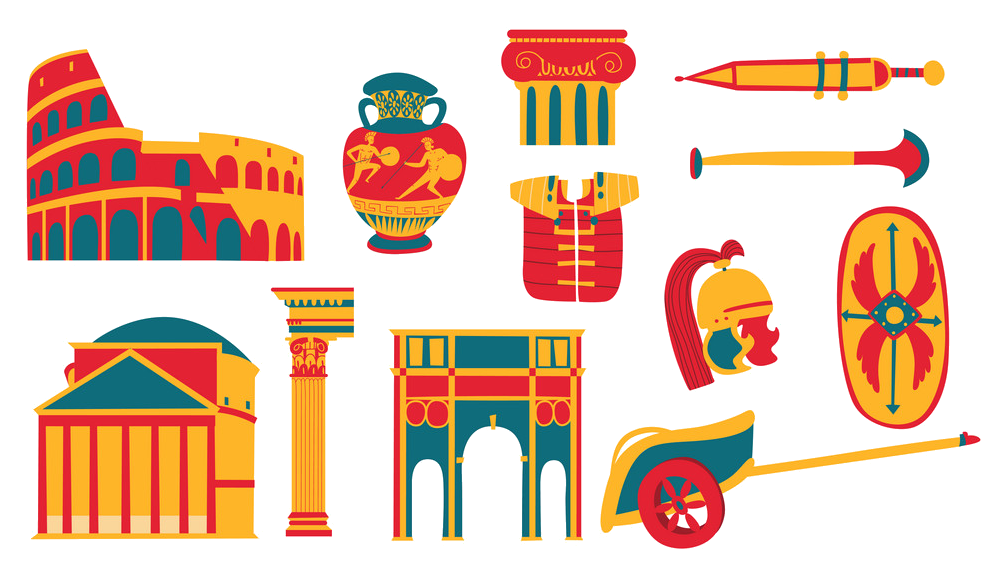

奥格斯堡(德语:Augsburg,又译奥古斯堡)是一座位于德国南部、巴伐利亚西南的城市。在神圣罗马帝国时代奥格斯堡就被划定是一帝国自由城市,直属于皇帝。今日的奥格斯堡除了是施瓦本行政区的地区政府所在地之外,也是奥格斯堡县的县府。
奥格斯堡自称是继特里尔之后德国第二古老的城市,其名称来源于前15年罗马皇帝屋大维统治时期建立的古罗马兵营奥古斯塔-温德利科伦(Augusta Vindelicorum),而该兵营的命名由来则是屋大维的称号“奥古斯都”。
2015年12月31日奥格斯堡有286,374名居民,是巴伐利亚州继慕尼黑和纽伦堡后第三大城市。1906年奥格斯堡的人口数量超过十万人,在德国属于大城市。它是巴伐利亚的23个地区中央之一。其附近的大城市有慕尼黑(东南约57千米)、纽伦堡(北约121千米)和斯图加特(西北约133千米)。奥格斯堡的都市地区在巴伐利亚也是第三大的,其总人口约为83万。
奥格斯堡是德国唯一一座有自己的官方节日的城市:8月8日是奥格斯堡和平节,因此奥格斯堡是德国节假日数量最高的城市。奥格斯堡是天主教主教的驻地。
Augsburg ist eine kreisfreie Großstadt im Südwesten Bayerns und zählt zu dessen drei Metropolen.[2] Sie ist Universitätsstadt und Sitz der Regierung und des Bezirks Schwaben sowie des Landratsamtes des die Stadt im Westen umgebenden Landkreises Augsburg.
Augsburg wurde 1909 zur Großstadt und ist mit knapp 300.000 Einwohnern nach München und Nürnberg die drittgrößte Stadt Bayerns. Der Ballungsraum Augsburg steht bezüglich Bevölkerung und Wirtschaftskraft in Bayern ebenfalls an dritter Stelle und ist Teil der Planungsregion Augsburg, in der etwa 885.000 Menschen leben. Augsburg hatte im Jahr 2017 die zweitgeringste Rate aller Straftaten unter den deutschen Großstädten über 200.000 Einwohnern.[3]
Der Name der Stadt, die zu den ältesten in Deutschland gehört, geht auf das 15 v. Chr. gegründete römische Heerlager und die spätere römische Provinzhauptstadt Augusta Vindelicum zurück. Im 13. Jahrhundert löste sich die Stadt von der Bischofsherrschaft, wurde spätestens 1316 zur Reichsstadt und häufiger Schauplatz von Reichstagen mit engen Verbindungen zu den Herrschern des Heiligen Römischen Reiches, die unter anderem von den Kaufmannsfamilien Welser und Fugger finanziert wurden („Fuggerstadt“). Nach der Reformation wurde Augsburg bikonfessionell; hier wurde der Augsburger Religionsfriede 1555 geschlossen. Seit Februar 2018 läuft eine Bewerbung zur Anerkennung als UNESCO-Welterbe.
Augsburg ist die einzige deutsche Stadt mit einem auf das Stadtgebiet beschränkten gesetzlichen Feiertag, dem Augsburger Hohen Friedensfest, das jedes Jahr am 8. August gefeiert wird. Damit hat sie mehr gesetzliche Feiertage als jede andere Region oder Stadt in Deutschland.
アウクスブルク(ドイツ語: Augsburg [ˈʔaʊ̯ksbʊʁk] (![]() 音声ファイル), アレマン語:Augschburg(アウクシュブルク))は、ドイツ連邦共和国バイエルン州南西部に位置する郡独立市である。
音声ファイル), アレマン語:Augschburg(アウクシュブルク))は、ドイツ連邦共和国バイエルン州南西部に位置する郡独立市である。
シュヴァーベン郡市連合、シュヴァーベン行政管区およびアウクスブルク郡の本部所在地であり、大学都市としても知られる。
アウクスブルクは1909年に大都市となり、26万人強の人口を有するこの街はミュンヘン、ニュルンベルクに次ぐバイエルン州第3の都市である。アウクスブルク都市圏はその人口、経済力ともに、やはりバイエルン州で3番目の規模であり、約83万人が住むアウクスブルク開発地域の一部である。
都市名はローマ属州時代のアウグスタ・ヴィンデリコルム (Augusta Vindelicorum) に由来し、紀元前15年にローマ皇帝アウグストゥスによって築かれた城にその起源を持つ。このため、アウクスブルクはドイツで最も古い都市の一つに数えられる。また、15世紀から16世紀に、フッガー家やヴェルザー家によって金融都市として繁栄を極めたことから、「フッガーシュタット」(フッガー都市)としばしば称される。
なお、標準ドイツ語では「アウクスブルク」と発音されるが、日本語では「g」を濁音で読み「アウグスブルク」「アウグスブルグ」などと表記される場合もある[2]。
Augsburg (German pronunciation: [ˈaʊ̯ksbʊʁk] ( listen); Austro-Bavarian: Augschburg) is a city in Swabia, Bavaria, Germany. It is a university town and regional seat of the Regierungsbezirk Schwaben. Augsburg is an urban district and home to the institutions of the Landkreis Augsburg. It is the third-largest city in Bavaria (after Munich and Nuremberg) with a population of 300,000 inhabitants, with 885,000 in its metropolitan area.[2]
listen); Austro-Bavarian: Augschburg) is a city in Swabia, Bavaria, Germany. It is a university town and regional seat of the Regierungsbezirk Schwaben. Augsburg is an urban district and home to the institutions of the Landkreis Augsburg. It is the third-largest city in Bavaria (after Munich and Nuremberg) with a population of 300,000 inhabitants, with 885,000 in its metropolitan area.[2]
After Neuss and Trier, Augsburg is Germany's third oldest city, founded in 15 BC by the Romans as Augusta Vindelicorum, named after the Roman emperor Augustus. It was a Free Imperial City from 1276 to 1803 and the home of the patrician Fugger and Welser families that dominated European banking in the 16th century. The city played a leading role in the Reformation as the site of the 1530 Augsburg Confession and 1555 Peace of Augsburg. The Fuggerei, the oldest social housing complex in the world, was founded in 1513 by Jakob Fugger.
Augsbourg (allemand Augsburg, prononcé en allemand : [ˈʔaʊ̯ksbʊʁk] Écouter ; latin Augusta Vindelicorum) est une ville allemande située dans le Land de Bavière, en Souabe bavaroise, sur la Route romantique.
Ville universitaire et industrielle, Augsbourg est le chef-lieu du district de Souabe (Regierungsbezirk Schwaben), de l'arrondissement d'Augsbourg (Landkreis) et le siège d'un diocèse catholique. Ses palais, ses églises et son hôtel de ville reflètent son âge d'or, lorsqu'elle était aux XVe et XVIe siècles une ville de premier rang en Europe.
La ville a actuellement environ 286 000 habitants (286 374 au 31 décembre 2015) et est ainsi, après Munich et Nuremberg, la troisième ville de Bavière. Son nom vient du latin Augusta Vindelicorum.
Augsbourg est une ville-arrondissement (Kreisfreie Stadt) et une des 82 grandes villes (Großstadt) allemandes depuis le début du XXe siècle ; le nombre de ses habitants a franchi la barre des 100 000 à la même époque.
Augusta (in tedesco: Augsburg, in bavarese Augschburg, in latino: Augusta Vindelicorum e anche Augusta Vindelicum) è una città extracircondariale della Germania, situata nella parte sud-occidentale della Baviera. È capoluogo del distretto governativo della Svevia ed è la sede amministrativa del circondario di Augusta.
Nel 2016 il Consiglio Federale Bavarese ha innalzato Augsburg a città metropolitana Con 300.000 abitanti[3] 885.000 abitanti nel Area Urbana è la terza città più popolosa della Baviera dopo Monaco e Norimberga. La città è sede vescovile della diocesi cattolica di Augusta e di un'università fondata nel 1970.
Fondata nel 15 a.C. durante il regno dell'imperatore Augusto, si contende, con altre città tedesche, il titolo di più antica città della Germania.
Augsburgo (en alemán: Augsburg  [ˈaʊ̯ksbʊʁk] (?·i)) es una ciudad metrópoli alemana. Es la capital de la región administrativa de Suabia del estado federado de Baviera. Augsburgo es ciudad independiente y al mismo tiempo capital del distrito homónimo.
[ˈaʊ̯ksbʊʁk] (?·i)) es una ciudad metrópoli alemana. Es la capital de la región administrativa de Suabia del estado federado de Baviera. Augsburgo es ciudad independiente y al mismo tiempo capital del distrito homónimo.
А́угсбург (нем. Augsburg, бав. Augschburg) — университетский город на юго-западе Баварии, столица Швабии. Считается наиболее древним городом Германии после Трира. С населением в 293.415 тысяч жителей является третьим по величине городом в Баварии (после Мюнхена и Нюрнберга). Крупный научный и промышленный центр; в 1997 году был назван самым «зелёным» городом в конкурсе, в котором участвовали девять европейских стран.
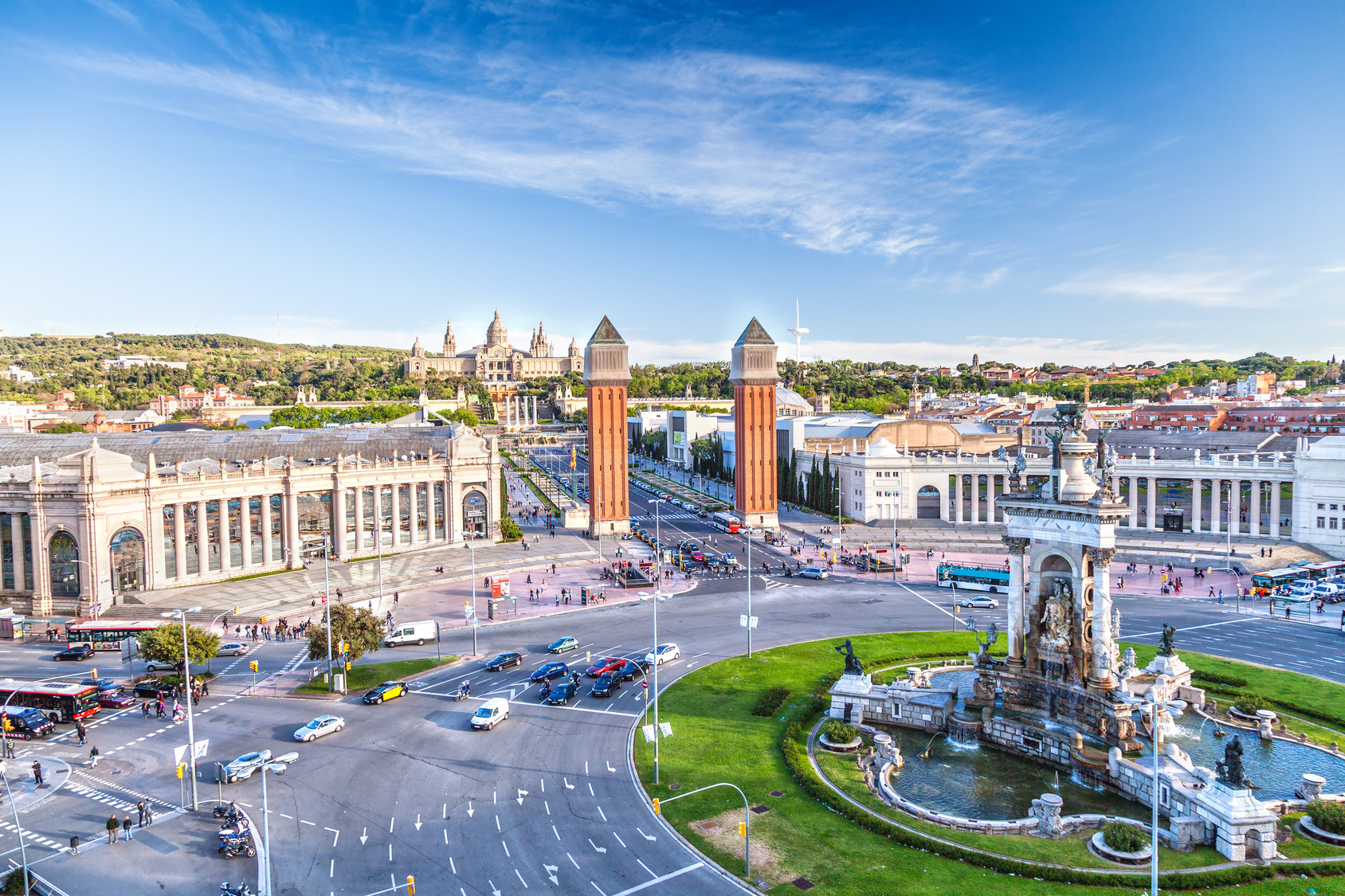
这座城市在展示通俗文化的同时,也没有忘记根深蒂固的传统。比如说,梅尔塞节还有在格拉西亚区、桑斯区或波布雷诺区举办的节庆活动,都向游客提供着不可多得的认识巴塞罗那的欢庆一面的机会。
以蔬果,新鲜水产香肠和橄榄油为基本原料,传统与现代相融合的烹饪手艺可以烹制出具有革新性又富有想象力的美食。于此,手工糖果和泡沫葡萄酒只能浅浅地触摸到巴塞罗那饮食文化的精髓。
巴塞罗那(加泰罗尼亚语:Barcelona,西班牙语:Barcelona)是西班牙加泰罗尼亚首府和巴塞罗那省省会,位于伊比利亚半岛的东北面,濒临地中海,全市人口约160万,都会区人口则约500万,为加泰罗尼亚第一大城。加泰罗尼亚的议会、行政机构、高等法院等政府中枢机构,以及最高首长均驻设于此。1999年,巴塞罗那由美国《国家地理杂志》评选为50个人生必游景点之一。
相传巴塞罗那由迦太基将领、汉尼拔的父亲哈米尔卡·巴卡所兴建,在其漫长的历史上还曾作为巴塞罗那伯爵领地和阿拉贡王国的都城。巴塞罗那因其众多历史建筑和文化景点成为众多旅游者的目的地,其中之代表是被列入联合国世界遗产的安东尼·高第和路易·多门内克·蒙塔内的建筑作品。安东尼·高第一直在巴塞罗那生活和工作,在这里有他很多的作品,其中最著名的包括桂尔宫、桂尔公园和圣家堂。巴塞罗那尚有两个知名的足球俱乐部:巴塞罗那和皇家西班牙人,其中巴塞罗那是世界最著名的足球俱乐部之一。
Barcelona (katalanisch [bəɾsəˈɫonə]; spanisch [baɾθeˈlona]; deutsch [baɐ̯səˈloːna] oder [baɐ̯t͡səˈloːna]) ist die Hauptstadt Kataloniens und nach Madrid die zweitgrößte Stadt Spaniens. Sie liegt am Mittelmeer, circa 120 Kilometer südlich der Pyrenäen und der Grenze zu Frankreich. Barcelona ist Verwaltungssitz der gleichnamigen Provinz und der Comarca Barcelonès.
Innerhalb des Stadtgebietes leben etwa 1,65 Millionen Menschen. Damit ist Barcelona die elftgrößte Gemeinde der Europäischen Union, nach Hamburg die zweitgrößte, die nicht die Hauptstadt eines Mitgliedstaates ist, und nach Paris die am zweitdichtesten besiedelte Millionenstadt Europas. Zusammen mit den in der Àrea Metropolitana de Barcelona zusammengeschlossenen Gemeinden der Agglomeration beträgt die Einwohnerzahl 3,16 Millionen. Im weiteren Einzugsbereich der Metropolregion (Àmbit Metropolità de Barcelona) leben insgesamt 4,86 Millionen Menschen. Mit jährlich mehr als sieben Millionen Touristen aus dem Ausland zählt Barcelona überdies zu den drei meistbesuchten Städten Europas.[2]
Barcelona (/ˌbɑːrsəˈloʊnə/ BAR-sə-LOH-nə, Catalan: [bəɾsəˈlonə], Spanish: [baɾθeˈlona]) is a city in Spain. It is the capital and largest city of Catalonia, as well as the second most populous municipality of Spain. With a population of 1.6 million within city limits,[5] its urban area extends to numerous neighbouring municipalities within the Province of Barcelona and is home to around 4.8 million people,[3][7] making it the sixth most populous urban area in the European Union after Paris, London, Madrid, the Ruhr area and Milan.[3] It is the largest metropolis on the Mediterranean Sea, located on the coast between the mouths of the rivers Llobregat and Besòs, and bounded to the west by the Serra de Collserola mountain range, the tallest peak of which is 512 metres (1,680 feet) high.
Founded as a Roman city, in the Middle Ages Barcelona became the capital of the County of Barcelona. After merging with the Kingdom of Aragon, Barcelona continued to be an important city in the Crown of Aragon as an economic and administrative centre of this Crown and the capital of the Principality of Catalonia. Barcelona has a rich cultural heritage and is today an important cultural centre and a major tourist destination. Particularly renowned are the architectural works of Antoni Gaudí and Lluís Domènech i Montaner, which have been designated UNESCO World Heritage Sites. The headquarters of the Union for the Mediterranean are located in Barcelona. The city is known for hosting the 1992 Summer Olympics as well as world-class conferences and expositions and also many international sport tournaments.
Barcelona is one of the world's leading tourist, economic, trade fair and cultural centres, and its influence in commerce, education, entertainment, media, fashion, science, and the arts all contribute to its status as one of the world's major global cities.[8][9] It is a major cultural and economic centre in southwestern Europe, 24th in the world (before Zürich, after Frankfurt)[10] and a financial centre. In 2008 it was the fourth most economically powerful city by GDP in the European Union and 35th in the world with GDP amounting to €177 billion.[11] In 2012 Barcelona had a GDP of $170 billion; and it was leading Spain in employment rate in that moment.[12]
In 2009 the city was ranked Europe's third and one of the world's most successful as a city brand.[13] In the same year the city was ranked Europe's fourth best city for business and fastest improving European city, with growth improved by 17% per year,[14] and the city has been experiencing strong and renewed growth for the past three years. Since 2011 Barcelona has been a leading smart city in Europe.[15] Barcelona is a transport hub, with the Port of Barcelona being one of Europe's principal seaports and busiest European passenger port,[16] an international airport, Barcelona–El Prat Airport, which handles over 40 million passengers per year,[17] an extensive motorway network, and a high-speed rail line with a link to France and the rest of Europe.[18]
Barcelone (Barcelona en catalan, prononcé /bəɾsəˈlonə/, et en espagnol, prononcé /baɾθeˈlona/) est la capitale administrative et économique de la Catalogne, de la province de Barcelone, de la comarque du Barcelonès ainsi que de son aire et de sa région métropolitaines, en Espagne.
Barcelone est la deuxième ville d'Espagne en termes de population, d'économie et d'activités, la onzième ville la plus peuplée de l'Union européenne et la sixième en incluant sa banlieue4: 4,84 millions de personnes vivent dans l'agglomération barcelonaise5. La majeure partie des municipalités adjacentes sont en outre rassemblées dans l'Aire métropolitaine de Barcelone.
Située sur le littoral méditerranéen, elle est traversée par les fleuves Llobregat et Besòs et bordée à l'ouest par la serra de Collserola qui culmine à 512 mètres (sommet : Tibidabo). Elle est considérée comme ville mondiale en raison de son importance dans les domaines de la finance, du commerce international, de l'édition, des arts, du divertissement et des médias. Barcelone est donc un centre économique majeur qui jouit de surcroît d'un des principaux ports méditerranéens et du deuxième aéroport espagnol derrière celui de Madrid-Barajas. Elle est aussi la ville qui possède le plus grand parc métropolitain du monde, le parc Collserola, devant Central Park à New York. Ayant été fondée par les Romains, la ville devint la capitale des comtes de Barcelone puis l'une des villes majeures de la Couronne d'Aragon et, après, la capitale de la principauté de Catalogne. Redessinée plusieurs fois pendant son histoire, elle est une destination touristique majeure et jouit d'un patrimoine culturel unique. Le palais Güell (en 1984), la Casa Milà, le parc Güell, le palais de la musique catalane et l'hôpital de Sant Pau figurent d'ailleurs sur la liste du patrimoine mondial de l'UNESCO. En outre, la ville est également connue pour avoir accueilli les Jeux olympiques en 1992 et, plus récemment, le siège de l'union pour la Méditerranée. Chaque année, les visiteurs arrivent par milliers et le nombre augmente de plus en plus. En 2015, un total de 8 988 038 touristes ont visité Barcelone6.
Barcellona (AFI: /barʧelˈlona/[1]; in catalano e spagnolo Barcelona) è una città di 1.620.809 abitanti (area metropolitana istituzionale: 3.239.337 abitanti) della Spagna, capoluogo della Catalogna, una comunità autonoma della parte nord-orientale dello Stato, oltre che dell'omonima provincia e della comarca del Barcelonès. Soprannominata Ciutat Comtal o Ciudad Condal (Città dei Conti), è la seconda città della Spagna per numero di abitanti dopo la capitale Madrid.
Nel 1992 fu sede dei Giochi Olimpici estivi. Nel 2004 vi si è tenuto per la prima volta assoluta il Forum Universale delle Culture, la città ha ospitato l'Esposizione internazionale del 1888 e quella del 1929, ed è la sede fissa del Mobile World Congress e dell'Unione per il Mediterraneo. Forte del turismo, del porto e della vicinanza alla Francia (160 km da Le Perthus), la città è il secondo maggior centro industriale e finanziario della Spagna dopo Madrid, nonché il maggior porto commerciale e turistico e uno dei maggiori d'Europa.
Barcelona es una ciudad española, capital de la comunidad autónoma de Cataluña, de la comarca del Barcelonés y de la provincia homónima.
Con una población de 1 620 809 habitantes en 2017,6 es la segunda ciudad más poblada de España después de Madrid, y la undécima de la Unión Europea. El área metropolitana de Barcelona, incluida en el ámbito metropolitano de Barcelona, cuenta con 5 029 181 habitantes (2011), siendo así la sexta ciudad de mayor población de la Unión Europea.78
Se ubica a orillas del mar Mediterráneo, a unos 120 km al sur de la cadena montañosa de los Pirineos y de la frontera con Francia, en un pequeño llano litoral limitado por el mar al este, la sierra de Collserola al oeste, el río Llobregat al sur y el río Besós al norte. Por haber sido capital del condado de Barcelona, se suele aludir a ella con la denominación antonomástica de Ciudad Condal.
La historia de Barcelona se extiende a lo largo de 4000 años, desde finales del Neolítico, con los primeros restos hallados en el territorio de la ciudad, hasta la actualidad. El sustrato de sus habitantes aúna a los pueblos íberos, romanos, judíos, visigodos, musulmanes y cristianos. Como capital de Cataluña y segunda ciudad en importancia de España, la Ciudad Condal ha forjado su relevancia con el tiempo, desde ser una pequeña colonia romana hasta convertirse en una ciudad valorada internacionalmente por aspectos como su economía, su patrimonio artístico, su cultura, su deporte y su vida social.
Barcelona ha sido escenario de diversos acontecimientos internacionales que han contribuido a consolidarla, desarrollarla y darle proyección mundial. Los más relevantes han sido la Exposición Universal de 1888, la Exposición Internacional de 1929, los Juegos Olímpicos de 1992 y el Fórum Universal de las Culturas 2004. Es también sede del secretariado de la Unión para el Mediterráneo.9
En la actualidad, Barcelona está reconocida como una ciudad global por su importancia cultural, financiera, comercial y turística. Posee uno de los puertos más importantes del Mediterráneo y es también un importante punto de comunicaciones entre España y Francia, debido a las conexiones por autopista y alta velocidad ferroviaria. El aeropuerto de Barcelona-El Prat, situado a 15 km del centro de la ciudad, fue utilizado por más de 47,2 millones de pasajeros en 2017.10

Bath [bɑːθ] ist eine ca. 100.000 Einwohner zählende Großstadt im Südwesten Englands. Sie ist berühmt für ihre römischen Bäder, die ab dem Jahr 43 n. Chr. von den damals hier lebenden Römern aus warmen Quellen entwickelt wurden. Diese einzigen heißen Quellen in England waren der Überlieferung nach schon in vorrömischer Zeit bekannt. Seit der Zeit Elisabeth I. entwickelte sich Bath immer mehr zum Kurort der wohlhabenden Bevölkerung. Daher gibt es noch viele historische Gebäude, insbesondere aus der georgianischen Epoche, in der Stadt. Der das Stadtbild prägende Werkstein ist der in der Nachbarschaft abgebaute Bath Stone. Bath ist Universitätsstadt und von der UNESCO als Weltkulturerbe eingestuft.
巴斯(英语:Bath,/ˈbɑːθ/或/ˈbæθ/;威尔士语:Caerfaddon)是英国英格兰西南区域萨默塞特郡巴斯和东北萨默塞特区的一座城市,位于伦敦以西156千米,布里斯托尔东南21千米,2021年人口普查时人口为94,092,较2001年人口增加了9900人。1590年,巴斯获得伊丽莎白女王一世颁发的皇家特许证而成为市级行政单位,1889年,它从萨默塞特郡中脱离出来,成为一个自治市,获得独立的行政管理权。1974年埃文郡成立,它被划归其中。1996年埃文郡废除后,巴斯和东北萨默塞特单一管理区成立,巴芙市成为该区的行政中心。
巴斯城最早建于公元43年,当时作为罗马帝国不列颠行省的一部分,巴斯是罗马人的温泉圣地,拉丁文名字是Aquae Sulis,意为“苏利丝之水”。但口头流传的说法称巴斯建城时间比这更早。埃文河谷地区的温泉是英格兰唯一的天然温泉,罗马人就在河谷之中,巴斯周围的小山上建立了温泉浴场和一座寺庙。公元973年,埃德加在巴斯修道院加冕成为英国国王。多年之后的乔治王时代,巴斯成为一个温泉圣地。这使巴斯城急剧扩张,留下许多杰出的乔治时期巴斯石制建筑。1987年,巴斯城当选为世界遗产城市之一。
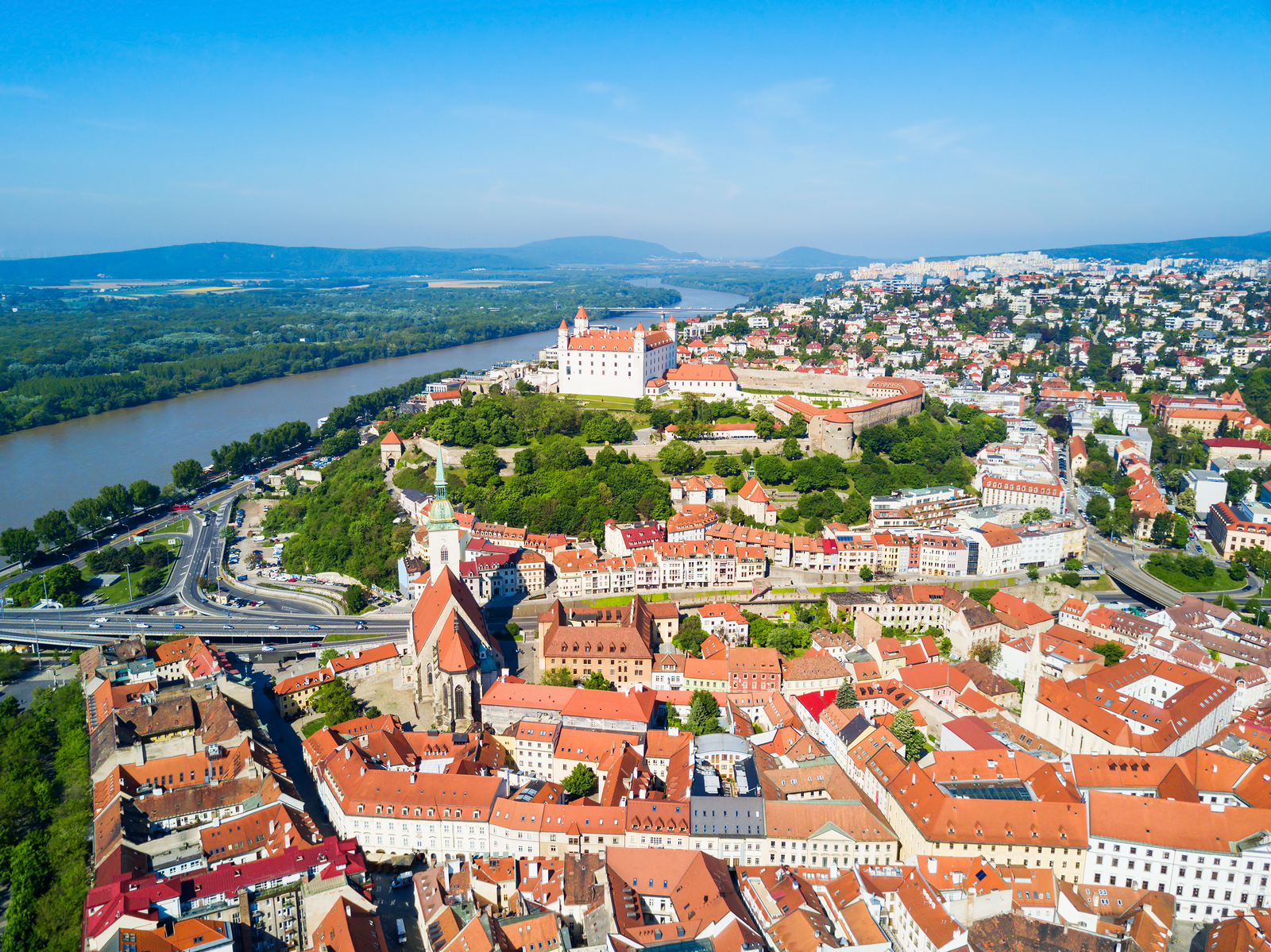
布拉迪斯拉发(斯洛伐克语:Bratislava;旧称Prešporok、德语:Pressburg)是斯洛伐克共和国的首都和最大城市,面积约367平方公里,人口为500,000人左右[1]。布拉迪斯拉发位于斯洛伐克西南部,多瑙河的左畔,紧邻奥地利和匈牙利两国边境,是世界上唯一同时与两个邻国接壤的首都[2]。
布拉迪斯拉发是斯洛伐克共和国的政治、经济与文化的中心,是该国总统府、国会和政府的所在地,也是文化中心,拥有数座大学、博物馆、歌剧院、美术馆以及其他重要的文化与教育机构[3]。斯洛伐克许多大型商业与金融机构的总部也设在布拉迪斯拉发。
该市在历史上曾经长期使用德语名称普莱斯堡(Pressburg),而且曾经受到日耳曼、捷克、匈牙利、犹太和斯洛伐克等各种民族的强烈影响。[4] 从1536年到1783年,该市是哈布斯堡王朝统治下匈牙利王国的首都。布拉迪斯拉发拥有许多斯洛伐克人、匈牙利人和德意志的历史人物,19世纪的斯洛伐克民族运动也以此为基地。
Bratislava ( ['bracɪslava], bis 1919 slowakisch Prešporok, deutsch Pressburg, ungarisch Pozsony) ist die Hauptstadt der Slowakei und mit 429.564 Einwohnern (Stand 31. Dezember 2017) die größte Stadt des Landes. Sie liegt an der südwestlichen Grenze der Slowakei am Dreiländereck mit Österreich und Ungarn und ist damit die einzige Hauptstadt der Welt, die an mehr als einen Nachbarstaat grenzt. Mit rund 55 km Luftlinie haben Bratislava und Wien den geringsten Abstand zweier europäischer Hauptstädte.
Als politisches, kulturelles und wirtschaftliches Zentrum des Landes ist Bratislava Regierungssitz der Slowakei sowie Standort mehrerer Universitäten, Museen, Theater und weiterer wirtschaftlicher, kultureller und wissenschaftlicher Institutionen.
Die Geschichte der Stadt wurde von zahlreichen Ethnien und Kulturen mit unterschiedlicher Gewichtung geprägt, wie Kelten, Römern, Germanen, Awaren, Deutschen, Magyaren, Juden und Slowaken. Bratislava war im Laufe seiner Geschichte eines der wichtigsten wirtschaftlichen und administrativen Zentren Großmährens, des Königreichs Ungarn (auch im Rahmen der österreichischen Monarchie beziehungsweise Österreich-Ungarns) und der Tschechoslowakei. Die Stadt war von 1536 bis 1783 und 1848 Hauptstadt des Königreichs Ungarn sowie von 1939 bis 1945 Hauptstadt der (ersten) Slowakischen Republik. 1968 wurde Bratislava Hauptstadt des Teilstaates Slowakische Sozialistische Republik (slowakisch: SSR) in der Tschechoslowakischen Sozialistischen Republik (ČSSR) und kurz (1990–1992) in der Tschechischen und Slowakischen Föderativen Republik (ČSFR). Seit 1993 ist sie Hauptstadt des selbständigen Staates Slowakei.
Das Wahrzeichen der Stadt ist die viertürmige Burg Bratislava.
ブラチスラヴァ(スロバキア語: Bratislava, スロバキア語発音: [ˈbratislava] (![]() 音声ファイル))は、スロバキアの首都で同国最大の都市である。旧称はドイツ語 : プレスブルク (Pressburg/Preßburg)、マジャル(ハンガリー)語 : ポジョニ (Pozsony)、スロバキア語 : プレシュポロク (Prešporok/Prešporek)、チェコ語 : プレシュプルク (Prešpurk) で、チェコスロバキア第一共和国建国後の1919年に現名称に改称した。
音声ファイル))は、スロバキアの首都で同国最大の都市である。旧称はドイツ語 : プレスブルク (Pressburg/Preßburg)、マジャル(ハンガリー)語 : ポジョニ (Pozsony)、スロバキア語 : プレシュポロク (Prešporok/Prešporek)、チェコ語 : プレシュプルク (Prešpurk) で、チェコスロバキア第一共和国建国後の1919年に現名称に改称した。
Bratislava (/ˌbrætɪˈslɑːvə, ˌbrɑː-/;[2][3] Slovak pronunciation: [ˈbratislaʋa] (![]() listen), German: Preßburg or Pressburg IPA: [ˈpʁɛsbʊɐ̯k], Hungarian: Pozsony) is the capital of Slovakia. With a population of about 450,000, it is one of the smaller capitals of Europe but still the country's largest city.[1] The greater metropolitan area is home to more than 650,000 people. Bratislava is in southwestern Slovakia, occupying both banks of the River Danube and the left bank of the River Morava. Bordering Austria and Hungary, it is the only national capital that borders two sovereign states.[4]
listen), German: Preßburg or Pressburg IPA: [ˈpʁɛsbʊɐ̯k], Hungarian: Pozsony) is the capital of Slovakia. With a population of about 450,000, it is one of the smaller capitals of Europe but still the country's largest city.[1] The greater metropolitan area is home to more than 650,000 people. Bratislava is in southwestern Slovakia, occupying both banks of the River Danube and the left bank of the River Morava. Bordering Austria and Hungary, it is the only national capital that borders two sovereign states.[4]
The city's history has been strongly influenced by people of different nations and religions, namely (in alphabetical order) Austrians, Bulgarians, Croats, Czechs, Germans, Hungarians, Jews, Serbs[5] and Slovaks.[6] It was the coronation site and legislative center of the Kingdom of Hungary from 1536 to 1783,[7] and has been home to many Slovak, Hungarian and German historical figures.
Bratislava is the political, cultural and economic centre of Slovakia. It is the seat of the Slovak president, the parliament and the Slovak Executive. It has several universities, and many museums, theatres, galleries and other cultural and educational institutions.[8] Many of Slovakia's large businesses and financial institutions have headquarters there.
In 2017, Bratislava was ranked as the third richest region of the European Union by GDP (PPP) per capita (after Hamburg and Luxembourg City). GDP at purchasing power parity is about three times higher than in other Slovak regions.[9][10]
Bratislava (![]() ? /ˈbracɪslava/ [Fiche]) est la capitale de la Slovaquie indépendante depuis 1993, située dans le Sud-Ouest du pays, juste à la frontière avec l'Autriche (elle n'est distante que de soixante kilomètres de Vienne), avec la Hongrie (à une dizaine de kilomètres) et à proximité également de la frontière avec la République tchèque.
? /ˈbracɪslava/ [Fiche]) est la capitale de la Slovaquie indépendante depuis 1993, située dans le Sud-Ouest du pays, juste à la frontière avec l'Autriche (elle n'est distante que de soixante kilomètres de Vienne), avec la Hongrie (à une dizaine de kilomètres) et à proximité également de la frontière avec la République tchèque.
Peuplée de 419 678 habitants en 2014, elle est la plus grande ville de Slovaquie1. Les Carpates commencent sur le territoire de la ville (Malé Karpaty, « Petites Carpates »). Elle est traversée par le Danube.
Bratislava est le siège de la présidence, du parlement et du gouvernement slovaques. Elle inclut des universités, de nombreux musées, théâtres et autres institutions culturelles dont une célèbre philharmonie2. La ville était traditionnellement influencée par plusieurs nationalités (Autrichiens, Hongrois, Slovaques…)3.
Au long de son histoire, la ville a aussi été connue sous le nom de Pressburg - Prešporok en slovaque, Pozsony en hongrois, Požun en croate. Elle a été connue en français sous les noms de Presbourg et Posonie.
Bratislava (in passato Presburgo o Posonio, in tedesco Pressburg - in passato Preßburg -, in slovacco era chiamata Prešporok o Prešporek fino al 1919, in ungherese Pozsony) è la capitale della Slovacchia. Con una popolazione di circa 490.000 abitanti è anche la sua città più grande.
Bratislava è il centro economico, politico, scientifico e culturale della Slovacchia e una città in trasformazione in seguito alla crescita economica del Paese e al suo ingresso nell'area euro. È sede del Parlamento e del Presidente della Slovacchia. Ospita università, centri di cultura, musei, teatri e gallerie d'arte. Vi hanno sede le principali attività economiche e finanziarie della Slovacchia.
La storia della città è legata alle nazionalità che vi hanno vissuto: slovacchi, cechi, tedeschi e ungheresi. La città fu capitale del Regno d'Ungheria sotto la monarchia d'Asburgo dal 1536 al 1783, quando Budapest era sotto occupazione ottomana, ed è stata la casa di personalità storiche slovacche, tedesche e ungheresi.
Bratislava (pronunciado en eslovaco ![]() [ˈbratislaʋa] (?·i); hasta 1919: en eslovaco Prešporok, en húngaro: Pozsony, en alemán Pressburg/Preßburg, en croata Požun y en español Presburgo) es la capital y mayor ciudad de Eslovaquia. Tiene aproximadamente 446.819 habitantes (2005) y está situada a orillas del Danubio, cerca de las fronteras con Austria y Hungría, a unos 60 km de Viena.
[ˈbratislaʋa] (?·i); hasta 1919: en eslovaco Prešporok, en húngaro: Pozsony, en alemán Pressburg/Preßburg, en croata Požun y en español Presburgo) es la capital y mayor ciudad de Eslovaquia. Tiene aproximadamente 446.819 habitantes (2005) y está situada a orillas del Danubio, cerca de las fronteras con Austria y Hungría, a unos 60 km de Viena.
La ciudad tiene la mayor densidad de población de la Europa central. Los montes Cárpatos comienzan en el territorio ocupado por la ciudad (Malé Karpaty, Pequeños Cárpatos). Bratislava es la sede del parlamento y gobierno eslovacos y cuenta con una gran oferta artística, cultural y educativa. La zona más interesante desde el punto de vista monumental y artístico es la Ciudad Vieja, con una gran variedad de comercios y servicios, aunque los precios son sensiblemente superiores a los de otras zonas de la ciudad y a los del interior del país. Mención especial merece también el puerto fluvial, donde se pueden ver barcos mercantes y una gran actividad. Bratislava es el centro político, económico, financiero y cultural de Eslovaquia.
Los territorios del sur de Eslovaquia, incluyendo Bratislava, formaron parte del Reino de Hungría desde la llegada de los húngaros en 895 hasta el fin de la Primera Guerra Mundial en 1918.
El Castillo de Bratislava se erigió en el siglo XV durante el reinado de Segismundo de Hungría. En 1811, un incendio destruyó el castillo, así como gran parte del caserío aledaño y, posteriormente, se llevó a cabo una reconstrucción del conjunto. Actualmente, el castillo alberga el Museo Nacional Eslovaco, que abarca exhibiciones arqueológicas, históricas y artísticas.
Una vez caído el reino de Hungría en 1526 ante los turcos otomanos, éste quedó dividido en tres partes: el principado independiente de Transilvania, el valiato de Buda, bajo dominio turco, y el reino húngaro bajo control del Sacro Imperio Romano Germánico. Bratislava se ubicaba en la parte germánica y recibió esa influencia como tal, hasta la expulsión de los turcos de Hungría en 1686. A partir de ese momento, el monarca húngaro era el emperador germánico y, por consiguiente, pretendía germanizar los territorios húngaros y eslovacos. En 1806 desaparece el Sacro Imperio y surge el Imperio austriaco en 1804, que heredó los territorios pertenecientes al reino de Hungría (inclusive Eslovaquia). Luego de las guerras de independencia húngaras contra los austriacos, se firma el acuerdo de Austria-Hungría en la ciudad en 1867 y nace el Imperio austrohúngaro. Bratislava tuvo el nombre Prešporok hasta el fin de la Primera Guerra Mundial y sus antiguos nombres (en alemán Pressburg y en húngaro Pozsony) aún son oficialmente reconocidos.
Братисла́ва (словацк. Bratislava), до 1919 года — Прешпорок или Пре́шпорек (Prešporok, Prešporek), Пре́сбург (нем. Pressburg), По́жонь (венг. Pozsony), в Cредние века — Истрополис (лат. Posonium, лат. Istropolis) — город в Центральной Европе, столица Словакии. Историческая столица Венгерского королевства (с 1541 по 1684 год), Первой Словацкой республики (с 1939 по 1945 год) и Словацкой социалистической республики (с 1965 по 1990 год). Население города составляет 425 923 человека[1], агломерации — около 700 тыс. человек[2] (недоступная ссылка с 14-10-2017 [915 дней]). Площадь города — 368 км².
Братислава и Вена являются самыми близкорасположенными столицами Европы (55 км и менее часа транспортной доступности друг от друга). Братислава непосредственно граничит с Австрией и Венгрией, являясь, таким образом, единственной в мире столицей, граничащей с двумя иностранными государствами. Братиславская улица Копчянская переходит в улицу Альте-Нордзюд-Ландесштрассе соседней австрийской деревни Китзее. До 1936 года из Братиславы в Вену можно было доехать на городском трамвае.

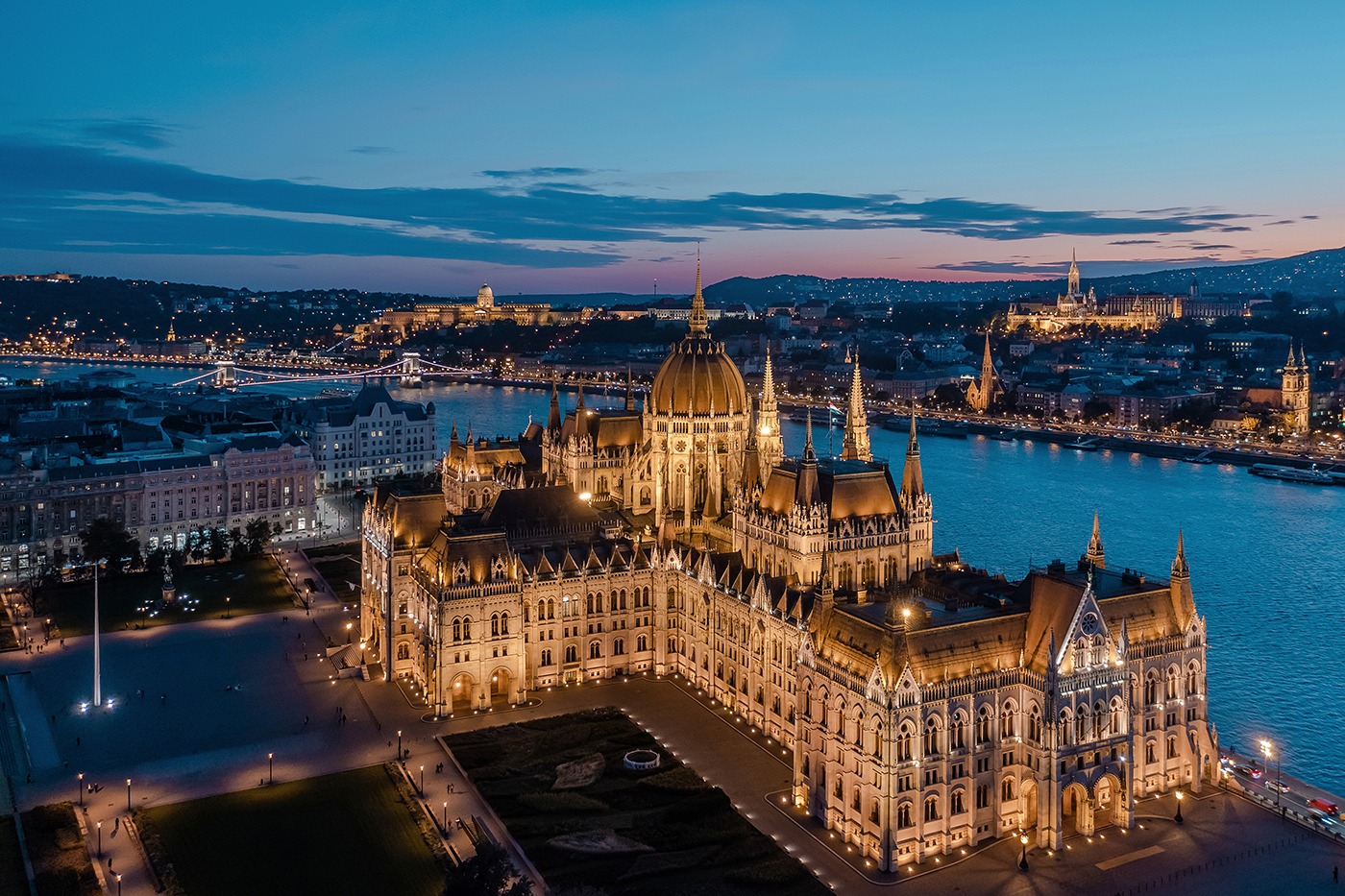

ブダペストまたはブダペシュト(ハンガリー語: Budapest, 英語:[ˈbuːdəpɛst], [ˈbuːdəpɛʃt] or [ˈbʊdəpɛst]; ハンガリー語発音: [ˈbudɒpɛʃt] (![]() 音声ファイル))は、ハンガリーの首都であり、同国最大の都市である[2]。
音声ファイル))は、ハンガリーの首都であり、同国最大の都市である[2]。
「ブダペスト」として一つの市でドナウ川の両岸を占めるようになったのは1873年11月17日に西岸のブダとオーブダ、東岸のペストが合併してからである[3][4]。
ドナウ川河畔に位置し、ハンガリーの政治、文化、商業、産業、交通の一大中心都市で[5]、東・中央ヨーロッパ (en) では最大、欧州連合の市域人口では8番目に大きな都市である。しばしばハンガリーのプライメイトシティとも表現される[6]。
ブダペストの市域面積は525km2 (202.7 sq mi)[3]で、2011年の国勢調査によるブダペストの人口は174万人[7]、ピークであった1989年の210万人より減少している[8]。これは、ブダペスト周辺部の郊外化によるものである[9]。ブダペスト都市圏(通勤圏)の人口は330万人である[10][11]。
ブダペストの歴史の始まりはローマ帝国のアクインクムとしてで、もともとはケルト人の集落であった[12][13]。アクインクムは古代ローマの低パンノニア属州の首府となっている[12]。マジャル人がブダペスト周辺にやって来たのは[14]9世紀頃である。最初の集落は1241年から1242年にかけてモンゴルの襲来 (en) により略奪された[15]。15世紀に[16]町が再建されるとブダペストはルネサンス期の人文主義者文化の中心となった[17]。続いてモハーチの戦いが起こり、オスマン帝国による150年間の支配が続き[18]、18世紀、19世紀に新しい時代に入ると町は発展し繁栄する。ブダペストは1873年にドナウ川を挟んだ都市の合併が行われると、世界都市となる[19]。また、1848年から1918年の第一次世界大戦勃発まで列強に含まれたオーストリア=ハンガリー帝国のウィーンに続く第二の首都であった。1920年のトリアノン条約によりハンガリーは国土の72%を失い、ハンガリーの文化や経済をブダペストがすべてを占めるようになった。ブダペストはその大きさや人口で圧倒的に優位に立ち、ハンガリーの他の都市を小さく見せていた[20]。ブダペストはハンガリー革命 (1848年)や1919年のハンガリー評議会共和国、1944年のパンツァーファウスト作戦、1945年のブダペスト包囲戦、1956年のハンガリー動乱など数々の歴史的な舞台の場でもあった。
ブダペストはヨーロッパでも最も美しい街の一つで[2][21][22]、ドナウ川河岸を含め世界遺産が広がりブダ城やアンドラーシ通り、英雄広場は良く知られている。ブダペスト地下鉄1号線Millenniumi Földalatti Vasútはロンドン地下鉄に次いで世界で2番目に古い地下鉄である[21][23]。ブダペストの他のハイライトはセーチェーニ温泉を含めた80の温泉で[24]世界でも最大の地下熱水系統がある[25]。世界で3番目に大きなシナゴーグであるドハーニ街シナゴーグや国会議事堂などもブダペストの見所である。ブダペストの観光客数は年間270万人に上り、ロンドンにある民間調査機関ユーロモニターによればブダペストは世界で37番目に旅行者が多い観光地であるとされている[26]。
Budapest /ˈbuːdəpɛst/ is the capital and the most populous city of Hungary, and the tenth-largest city in the European Union by population within city limits.[9][10][11] The city had an estimated population of 1,752,704 in 2016 distributed over a land area of about 525 square kilometres (203 square miles).[12] Budapest is both a city and county, and forms the centre of the Budapest metropolitan area, which has an area of 7,626 square kilometres (2,944 square miles) and a population of 3,303,786, comprising 33 percent of the population of Hungary.[13][14]
The history of the city began when an early Celtic settlement transformed into a Roman town of Aquincum,[15][16] the capital of Lower Pannonia.[15] The Hungarians arrived in the territory in the late 9th century.[17] By the 11th century, Buda and Óbuda (Old Buda) became the names of their settlements on the west bank of the river Danube, with a formerly Slavic and then German settlement Pest on the opposite side.[3][18] The area was pillaged by the Mongols in 1241.[18] The Battle of Mohács in 1526 was followed by nearly 150 years of Ottoman rule.[19] After the reconquest of Buda in 1686, the region entered a new age of prosperity. Pest-Buda became a global city with the unification of Buda, Óbuda, and Pest on November 17, 1873, with the name 'Budapest' given to the new capital.[12][20] Budapest also became the co-capital of the Austro-Hungarian Empire,[21] a great power that dissolved in 1918, following World War I. The city was the focal point of the Hungarian Revolution of 1848, the Battle of Budapest in 1945, and the Hungarian Revolution of 1956.[22][23]
Budapest is a Beta+ global city with strengths in commerce, finance, media, art, fashion, research, technology, education, and entertainment.[24][25] It is Hungary's financial centre[26] and the highest ranked Central and Eastern European city on Innovation Cities Top 100 index,[27][28][29] as well ranked as the second fastest-developing urban economy in Europe.[30] Budapest is host to many major international organization's regional offices, including the United Nations and ICDT,[31] furthermore it is the headquarters of the European Institute of Innovation and Technology,[32] the European Police College[33] and the first foreign office of the China Investment Promotion Agency.[34] Over 40 colleges and universities are located in Budapest, including the Eötvös Loránd University, Semmelweis University and the notable Budapest University of Technology and Economics.[35][36] Opened in 1896,[37] the city's subway system, the Budapest Metro, serves 1.27 million, while the Budapest Tram Network serves 1.08 million passengers daily.[38]
Budapest is cited as one of the most beautiful cities in Europe,[9][39][40] ranked as "the world's second best city" by Condé Nast Traveler,[41] and "Europe's 7th most idyllic place to live" by Forbes.[42] Among Budapest's important museums and cultural institutions is the Museum of Fine Arts. Further famous cultural institutions are the Hungarian National Museum, House of Terror, Franz Liszt Academy of Music, Hungarian State Opera House and National Széchényi Library. The central area of the city along the Danube River is classified as a UNESCO World Heritage Site and has many notable monuments, including the Hungarian Parliament, Buda Castle, Fisherman's Bastion, Gresham Palace, Széchenyi Chain Bridge, Matthias Church and the Liberty Statue.[43] Other famous landmarks include Andrássy Avenue, St. Stephen's Basilica, Heroes' Square, the Great Market Hall, the Nyugati Railway Station built by the Eiffel Company of Paris in 1877 and the second-oldest metro line in the world, the Millennium Underground Railway.[39] The city also has around 80 geothermal springs,[44] the largest thermal water cave system,[45] second largest synagogue, and third largest Parliament building in the world.[46] Budapest attracts 4.4 million international tourists per year, making it a popular destination in Europe.[47]
Budapest (prononcé [by.da.ˈpɛst] , hongrois : Budapest [ˈbu.dɒ.pɛʃt] Écouter ; allemand : Budapest ou anciennement Ofen-Pesth) est la plus grande ville et la capitale de la Hongrie. Elle se situe en aval du coude du Danube entre le massif de Transdanubie et l'Alföld. Ses habitants sont les Budapestois (en hongrois, budapesti, -ek).
La ville actuelle est créée en 1873 par la fusion de Buda — alors capitale de la Hongrie — de Pest et d'Óbuda1. Elle a pour origine le site d'Aquincum2, un point de peuplement celte3 devenu capitale de la Pannonie inférieure pendant l'époque romaine3. Les Magyars arrivent dans la région au IXe siècle. Leur premier point d'implantation est pillé par les Mongols en 1241-12424. La ville est reconstruite et devient l'un des centres de la culture humaniste de la Renaissance5 au XVe siècle6. Après près de 150 ans de domination ottomane, elle poursuit son développement et connaît son apogée avec l'épanouissement de l'ère industrielle aux XVIIIe et XIXe siècles. Après la fusion de 1873 et l'accession de la ville au rang de seconde capitale de l'Autriche-Hongrie, Budapest atteint les proportions et les caractéristiques d'une ville mondiale7. Marquée par les différentes traces léguées par l'histoire, Budapest a notamment été l'épicentre de la révolution hongroise de 1848, de la République des conseils de Hongrie de 1919, de l'opération Panzerfaust en 1944, de la bataille de Budapest de 1945 et de l'insurrection de 1956.
Considérée comme l'une des plus belles villes d'Europe et comme la « perle » du Danube8,1,9, son panorama, le quartier du château de Buda, l'avenue Andrássy et le métropolitain du Millénaire figurent au patrimoine mondial de l'UNESCO8,10. Destination touristique importante, la ville attire plus de 4,3 millions de visiteurs par an11.
Plus grande ville du pays, elle en est le principal centre politique, culturel, commercial et industriel. Elle abrite le Parlement hongrois, les bâtiments ministériels et les ambassades du pays ainsi que les sièges sociaux des entreprises installées en Hongrie. Son ancien statut de cocapitale de l'Autriche-Hongrie lui confère un rayonnement important dans la Mitteleuropa. La partition du royaume de Hongrie à la suite du traité de Trianon en 1920 en fait une ville démesurée pour la Hongrie dans ses frontières actuelles. La macrocéphalie dont est atteinte la ville se concrétise par la convergence de la plupart des réseaux routiers et ferroviaires du pays en son centre et des écarts démographiques et économiques disproportionnés entre la capitale et la province12 (près de 20 % de la population hongroise est budapestoise). Avec ses 1 702 297 habitants13 (l'aire urbaine en compte 2 524 697), Budapest est également la ville la plus peuplée d'Europe centrale (si l'on exclut Berlin de l'Europe centrale). Elle en est également considérée du point de vue des échanges économiques comme une importante plaque tournante14. Budapest abrite le siège de l'Institut européen d'innovation et de technologie (IET)15.
Budapest (IPA: [ˈbudɒpɛʃt]; pronuncia italiana moderna: /ˈbudapest/[1]) è la capitale e la maggiore città dell'Ungheria.
Amministrata come un comune autonomo, costituisce inoltre il centro primario del Paese per la vita politica, economica e culturale; al 2016 conta 1 759 407 abitanti, mentre la popolazione residente nell'area metropolitana ammonta a oltre 3 300 000 persone.
Budapest nacque ufficialmente nel 1873 dall'unione delle città storiche di Buda e Óbuda, ubicate sulla sponda destra del Danubio, con l'abitato di Pest, situato sulla riva opposta del fiume e anch'esso di antiche origini; fino al 1918 fu una delle due capitali dell'Impero austro-ungarico, dissoltosi al termine della prima guerra mondiale.
Nel XXI secolo, Budapest è diventata una metropoli globale e si è affermata come una popolare destinazione turistica: nel 2011, secondo i dati forniti da Euromonitor International, la capitale ungherese è stata la 25ª città più visitata del mondo[2].
Budapest (![]() /ˈbudɒpɛʃt/ (?·i)) es la capital y ciudad más poblada de Hungría,2 así como su principal centro industrial, comercial y de transportes.3 La ciudad posee 1,74 millones de habitantes (2011),4 una disminución significativa respecto de los casi 2,1 millones con que contaba a mediados de los años 1980,5 que representan un quinto de la población total de Hungría. Es la ciudad más poblada de Europa central-oriental y la séptima de la Unión Europea. La ciudad ocupa una superficie de 525 km²6 y su área metropolitana cuenta con una población de 2,38 millones de habitantes. Budapest se convirtió en una única ciudad cuando ocupó las dos orillas del río Danubio, unificando las ciudades de Buda y Óbuda, en la orilla oeste, con Pest, en la orilla este, el 17 de noviembre de 1873.67
/ˈbudɒpɛʃt/ (?·i)) es la capital y ciudad más poblada de Hungría,2 así como su principal centro industrial, comercial y de transportes.3 La ciudad posee 1,74 millones de habitantes (2011),4 una disminución significativa respecto de los casi 2,1 millones con que contaba a mediados de los años 1980,5 que representan un quinto de la población total de Hungría. Es la ciudad más poblada de Europa central-oriental y la séptima de la Unión Europea. La ciudad ocupa una superficie de 525 km²6 y su área metropolitana cuenta con una población de 2,38 millones de habitantes. Budapest se convirtió en una única ciudad cuando ocupó las dos orillas del río Danubio, unificando las ciudades de Buda y Óbuda, en la orilla oeste, con Pest, en la orilla este, el 17 de noviembre de 1873.67
La historia de Budapest comenzó con Aquincum, originalmente un asentamiento celta89 que se convirtió en la capital romana de Panonia Inferior.8 Los húngaros llegaron al territorio en el siglo IX.10 Su primer asentamiento fue saqueado por los mongoles en 1241-42.11 La ciudad restablecida se convirtió en uno de los centros de la cultura del Renacimiento humanista en el siglo XV.1213 Después de la batalla de Mohács y tras casi 150 años de dominio otomano,14 el desarrollo de la región entró en una nueva era de prosperidad en los siglos XVIII y XIX, y Budapest se convirtió en una ciudad global después de la unificación de 1873.15 También se convirtió en la segunda capital de Austria-Hungría, una gran potencia que se disolvió en 1918. Budapest fue el punto focal de la revolución húngara de 1848, la República Soviética Húngara de 1919, la Operación Panzerfaust en 1944, la batalla de Budapest de 1945 y la Revolución de 1956.
Considerada como una de las ciudades más bellas de Europa,21617 Budapest cuenta con varios sitios que son Patrimonio de la Humanidad, entre los que se incluyen, a orillas del Danubio, el barrio del Castillo de Buda, la avenida Andrássy, la Plaza de los Héroes y el Metropolitano del Milenio, el segundo más antiguo del mundo.1618 Otros puntos destacados incluyen un total de 80 manantiales geotérmicos,19 el mayor sistema de cuevas de aguas termales del mundo,20 la segunda sinagoga más grande y el tercer edificio del Parlamento más grande del mundo. La ciudad atrae a alrededor de 4,3 millones de turistas al año, convirtiéndola en la 25.ª ciudad más popular del mundo, según Euromonitor.21
Budapest es, también, un importante centro financiero de Europa Central. La ciudad se situó tercera (de un total de 65 ciudades) en el Índice de Mercados Emergentes elaborado por Mastercard,22 y clasificada como la ciudad mejor habitable de Europa Central y Europa del Este por índice de calidad de vida según Economist Intelligence Unit.2324 También se clasificó como el "séptimo lugar idílico de Europa para vivir" por la revista Forbes,25 y como la novena ciudad más bella del mundo por UCityGuides.26 Es, también, la mejor ciudad de Europa Central y del Este en el índice Innovation Cities' Top 100.2728
Будапе́шт (венг. Budapest [ˈbudɒpɛʃt]) — столица Венгрии и самый крупный город страны. По численности населения, составлявшей на январь 2014 года 1,745 млн жителей[2], в Европейском союзе Будапешт занимает восьмое место. Город образовался в 1873 году в результате слияния нескольких венгерских городов: Пешта, расположенного на восточной стороне реки Дунай, Буды и Обуды, занимающих западный берег Дуная.

剑桥(英语:Cambridge,旧译康桥[2]),英国英格兰东区域剑桥郡的城市、自治市镇-非都市区,是英国历史最悠久的大学城。剑桥建立于康河之上,于伦敦以北约八十公里。二零一一年英国人口普查显示其有人口约十二万四千人,其中约二万五千人为学生。有考古学证据显示早于青铜器时代剑桥已有人聚居,后于罗马和维京时期成为了重要的贸易中心。十二世纪皇家特许状授予剑桥城镇的地位,但它现今城市的地位于一九五一年才被正式授予。
世界知名的剑桥大学一二零九年创立于剑桥。大学的建筑包括国王学院礼拜堂、卡文迪许实验室和剑桥大学图书馆。剑桥大学图书馆是世上最大的法定送存图书馆之一。剑桥的天际线主要是几个大学学院的建筑,也包含圣母暨英格兰殉道圣人堂的尖塔、阿登布鲁克医院的烟囱和圣约翰学院礼拜堂的尖塔。安格里亚鲁斯金大学的主要校址也位于剑桥,此大学演变自剑桥艺术学院(Cambridge School of Art)和剑桥郡科艺学院(Cambridgeshire College of Arts and Technology)。剑桥也是所谓硅沼地(Silicon Fen)的中心,其包含诸如软件和生物科学等等各种高科技产业和各样剑桥大学间接带动的新创企业。多于四成的剑桥劳动人口拥有高等教学学位,此为国家平均的两倍。世上最大的生物医学研究集中地之一的剑桥生物医学园区(Cambridge Biomedical Campus),也即将成为阿斯利康制药和柏特沃斯医院(Papworth Hospital)新址的所在地。
剑桥的帕克公园(Parker's Piece)是世上第一场现代足球比赛的举行地点。剑桥的仲夏公地(Midsummer Common)为仲夏游乐会(Midsummer Fairs)和有称为草莓游乐会(Strawberry Fair)的音乐艺术节之所在地。一年一度的剑桥啤酒节举行于耶稣绿地(Jesus Green)。剑桥在M11和A14公路之旁,而剑桥火车站距离伦敦国王十字车站不足一小时车程。
在剑桥,除了剑桥大学建筑之外,还有商店、公园、茶艺馆,以及代表剑桥现代化一面的百货公司,商店及运动设施。康河上可以泛舟,在剑桥可以参加音乐会或步行到郊外欣赏幽美景色,也可以和剑桥居民一样,享受骑脚踏车的乐趣。
Cambridge [ˈkeɪmbɹɪdʒ] ist eine Stadt im Vereinigten Königreich, und Hauptstadt der Grafschaft Cambridgeshire mit etwa 123.800 Einwohnern, darunter etwa 24.500 Studenten.
Berühmt sind die University of Cambridge, die gotische Kapelle und der Chor des King’s College, die Universitätsbibliothek sowie das Trinity College. Nach Cambridge sind die Titel des Duke of Cambridge und des Earl of Cambridge benannt. Cambridge liegt am Fluss Cam etwa 80 km nordöstlich von London im Osten Englands. Cambridge wird für Wahlzwecke in 14 wards gegliedert.: Abbey, Arbury, Castle, Cherry Hinton, Coleridge, East Chesterton, King's Hedges, Market, Newnham, Petersfield, Queen Edith's, Romsey, Trumpington und West Chesterton.
Cambridge (/ˈkeɪmbrɪdʒ/[3] KAYM-brij) is a university city and the county town of Cambridgeshire, England, on the River Cam approximately 50 miles (80 km) north of London. At the United Kingdom Census 2011, its population was 123,867 including 24,506 students.[2][4] Cambridge became an important trading centre during the Roman and Viking ages, and there is archaeological evidence of settlement in the area as early as the Bronze Age. The first town charters were granted in the 12th century, although modern city status was not officially conferred until 1951.
Cambridge is home to the world-renowned University of Cambridge, which was founded in 1209.[5] The university includes King's College Chapel, Cavendish Laboratory, and the Cambridge University Library, one of the largest legal deposit libraries in the world. The city's skyline is dominated by several college buildings, along with the spire of the Our Lady and the English Martyrs Church, the chimney of Addenbrooke's Hospital and St John's College Chapel tower. Anglia Ruskin University, evolved from the Cambridge School of Art and the Cambridgeshire College of Arts and Technology, also has its main campus in the city.
Cambridge is at the heart of the high-technology Silicon Fen with industries such as software and bioscience and many start-up companies born out of the university. More than 40% of the workforce has a higher education qualification, more than twice the national average[citation needed]. The Cambridge Biomedical Campus, one of the largest biomedical research clusters in the world, is soon to be home to AstraZeneca, a hotel and the relocated Papworth Hospital.[6]
Parker's Piece hosted the first ever game of Association football. The Strawberry Fair music and arts festival and Midsummer Fairs are held on Midsummer Common, and the annual Cambridge Beer Festival takes place on Jesus Green. The city is adjacent to the M11 and A14 roads, and Cambridge station is less than an hour from London King's Cross railway station.
Cambridge /'keɪm.brɪdʒ/ est une ville d’Angleterre, au Royaume-Uni, située à 100 km au nord de Londres. Elle est connue pour son université de renommée mondiale, la deuxième plus ancienne d'Angleterre après celle d'Oxford. Elle est également le centre administratif du comté du Cambridgeshire. Depuis 1951, Cambridge possède officiellement le statut de cité.
En 2011, la population de la ville était estimée à 123 867 habitants, dont plus de 24 000 étudiants (parmi lesquels plus de 17 000 étudiants de l'université de Cambridge). Aujourd'hui, 31 collèges sont gérés de manière autonome et indépendante, assurant l'hébergement et le suivi pédagogique des étudiants tandis que l'université se charge de l'enseignement.
Aujourd'hui Cambridge est au cœur d'un centre de techniques de pointe surnommé le Silicon Fen (d'après Silicon Valley). Sa force économique et innovatrice repose sur les industries de l'informatique, la biologie et des startup couvées par l'université. Plus de 40 % de la population possèdent un diplôme d'éducation supérieure, plus de deux fois la moyenne nationale.
Cambridge /ˈkeɪmbrɪdʒ/ es un distrito no metropolitano del Reino Unido, una ciudad universitaria inglesa muy antigua y la capital del condado de Cambridgeshire, a orillas del río Cam.
Se encuentra aproximadamente a ochenta kilómetros de Londres y la rodean varias villas y pueblos. Su fama la debe a la Universidad de Cambridge, que incluye a los Laboratorios Cavendish (denominados así en honor a Henry Cavendish), el hospital Addenbrooke, el coro de la capilla del King's College y la Biblioteca de la Universidad. Estos dos últimos edificios sobresalen respecto del resto de la ciudad. En la ciudad también se encuentra un campus de la Universidad Anglia Ruskin.
De acuerdo con el censo de 2001, la ciudad cuenta con 108 863 habitantes2 (de ellos, 22 153 son estudiantes).
El nombre de la ciudad significa «puente del [río] Cam».
En abril de 2011, la ciudad le da su nombre al título de nobleza «duque de Cambridge» al príncipe Guillermo Arturo Felipe Luis tras su matrimonio con Catalina (Kate) Middleton, debido a la tradición británica de que a los príncipes reales se les conceda un título nobiliario al contraer matrimonio.
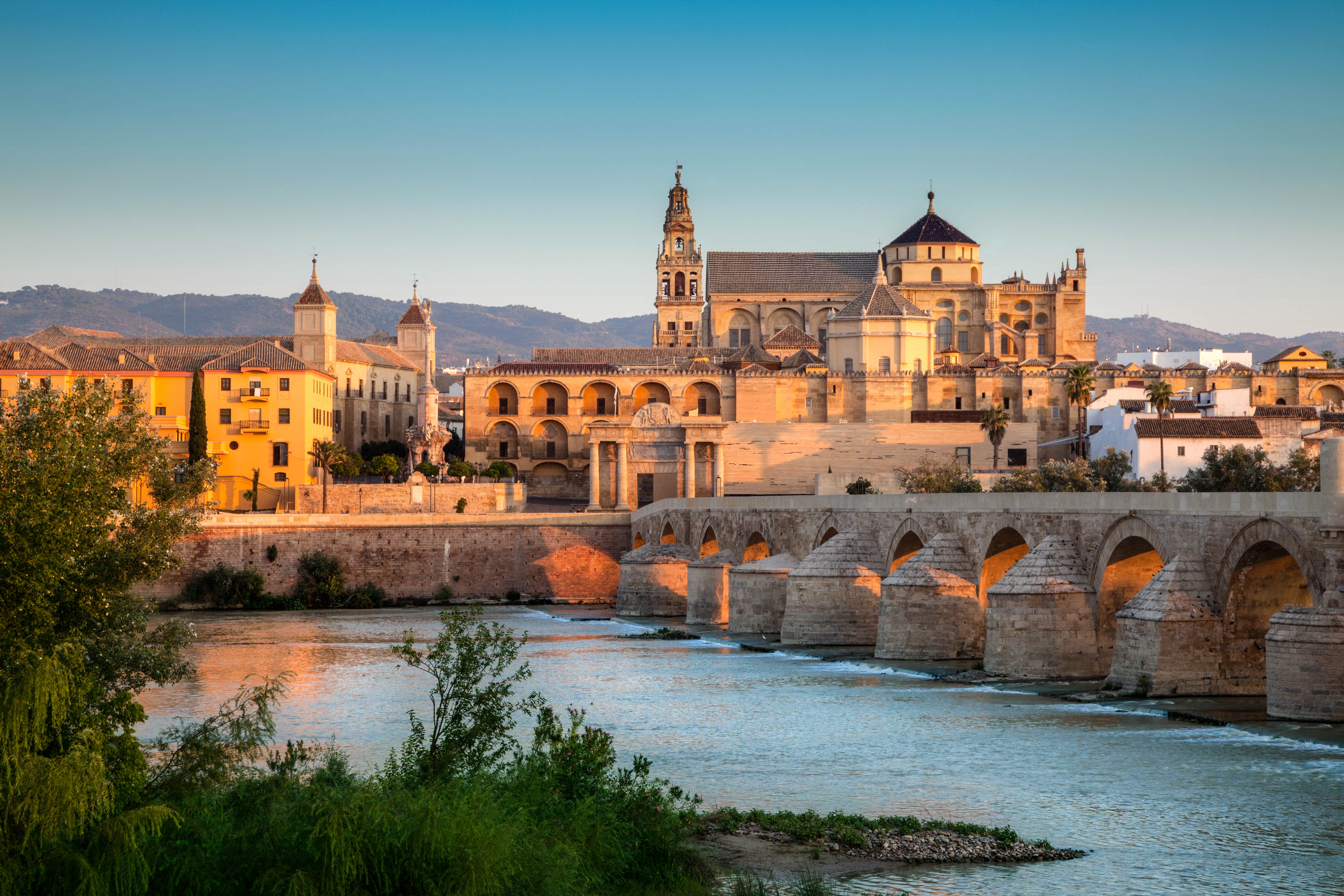
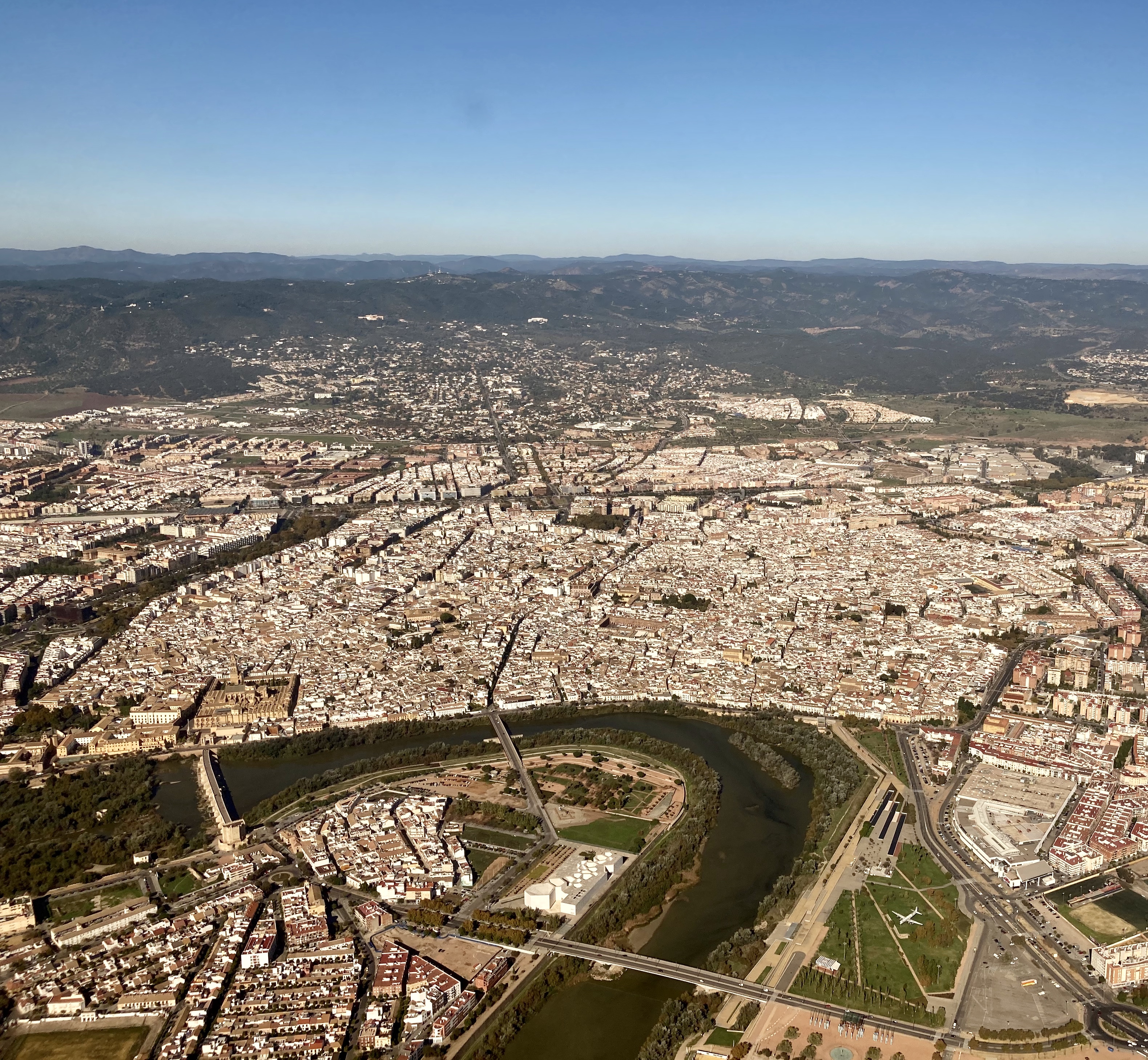
コルドバ(Córdoba)は、スペイン・アンダルシア州コルドバ県のムニシピオ(基礎自治体)。コルドバ県の県都である。グアダルキビール川に面する。
かつての後ウマイヤ朝の首都で、イスラム時代の文化を伝える建築物や街路が遺されている。メスキータやユダヤ人街を含む「コルドバ歴史地区」は世界遺産に登録されている。
Córdoba (/ˈkɔːrdəbə/; Spanish: [ˈkoɾðoβa]),[a] or Cordova (/ˈkɔːrdəvə/)[6][7] in English, is a city in Andalusia, southern Spain, and the capital of the province of Córdoba. It is the third most populated municipality in Andalusia, after Seville and Málaga, and the 11th overall in the country.
It was a Roman settlement on the right bank of the Guadalquivir, taken over by the Visigoths, followed by the Muslim conquests in the eighth century and later becoming the capital of the Umayyad Caliphate of Córdoba. During these Muslim periods, Córdoba was transformed into a world leading center of education and learning, producing figures such as Averroes, Ibn Hazm, and Al-Zahrawi,[8][9] and by the 10th century it had grown to be the second-largest city in Europe.[10][11] Following the Christian conquest in 1236, it became part of the Crown of Castile.
Córdoba is home to notable examples of Moorish architecture such as the Mezquita-Catedral, which was named as a UNESCO World Heritage Site in 1984 and is now a cathedral. The UNESCO status has since been expanded to encompass the whole historic centre of Córdoba, Medina-Azahara and Festival de los Patios. Cordoba has more World Heritage Sites than anywhere in the world, with four.[12] Much of this architecture, such as the Alcázar and the Roman bridge has been reworked or reconstructed by the city's successive inhabitants.
Cordoue (en espagnol : Córdoba, en arabe andalou Qurṭuba) est une ville située dans le sud de l'Espagne, en Andalousie. Cordoue est la capitale de la province homonyme. La ville est située sur les rives du fleuve Guadalquivir, non loin de la région montagneuse de la sierra Morena. Elle comptait 326 039 habitants en 2020, ce qui en fait l'une des villes les plus peuplées d'Andalousie avec Séville et Malaga.
La ville possède un riche patrimoine architectural et culturel, qui conserve des vestiges des différentes phases de son histoire. Dans l'Antiquité, la ville est la capitale de la province romaine d'Hispanie ultérieure pendant la période républicaine, puis de la province de Bétique durant l'Empire romain. Au Moyen Âge, après la conquête du sud de la péninsule ibérique par les Arabes et les Berbères au VIIIe siècle, Cordoue connaît une période d'expansion et de rayonnement particulier au Xe siècle en tant que capitale du Califat de Cordoue gouverné par une branche locale de la dynastie des Omeyyades. Elle redevient une ville de taille moyenne après la conquête de la région par les rois catholiques de Castille et d'Aragon au XIIIe siècle. Le Centre historique de Cordoue est classé depuis 1994 au patrimoine mondial de l'UNESCO, de même que la mosquée-cathédrale, Medina-Azahara ainsi que la fête des patios de Cordoue. Ce qui fait de Cordoue la ville du monde la plus classée au patrimoine mondial de l’Unesco1. Cordoue compte des monuments tels que le pont romain, la mosquée-cathédrale (Mezquita), le quartier juif médiéval (Judería) et l'Alcázar des rois chrétiens. Cordoue, ville des trois cultures2, est très célèbre pour ses penseurs. Les trois principaux philosophes nés à Cordoue sont Sénèque, Averroès et Maïmonide, philosophes majeurs de la civilisation romaine, islamique et juive.
Cordova (AFI: /ˈkɔrdova/[2]; in spagnolo Córdoba; in latino Cordŭba) è un comune spagnolo di 326 609 abitanti situato nella comunità autonoma dell'Andalusia, sulla riva del Guadalquivir e ai piedi della Sierra Morena. Fu la capitale della al-Andalus. Durante l'epoca d'oro islamica, Cordova fu trasformata in un centro mondiale di istruzione e apprendimento,[3][4] dando i natali a importanti filosofi e scienziati come Averroè, Ibn Hazm e Abu al-Qasim al-Zahrawi, e divenne la città più grande d'Europa, superando Costantinopoli.[5] Fu conquistata dal Regno di Castiglia tramite la Reconquista cristiana nel 1236.
Córdoba es una ciudad y municipio español en Andalucía, capital de la provincia homónima, situada en una depresión a orillas del Guadalquivir y al pie de Sierra Morena. Alberga una población de 326 039 habitantes en 2020, siendo la tercera ciudad más grande y poblada de Andalucía tras Sevilla y Málaga, y la duodécima de España. Su área metropolitana comprende ocho municipios, con una población de 360 298 habitantes en 2020, la vigésima tercera más poblada de España.5
Fundada por los romanos durante el siglo II a. C., llegaría a ser capital de la Hispania Ulterior en tiempos de la República romana, además de la provincia Bética durante el Imperio romano. No obstante, su momento álgido trascurrirá durante la dominación musulmana de la península ibérica, cuando se alzará como capital del Emirato de Córdoba, mientras que durante el Califato de Córdoba se convirtió en la ciudad más habitada, culta y opulenta de Europa y un centro líder mundial de la educación.678 Durante la larga Edad Media europea, en Córdoba florecieron las letras y las ciencias, gestándose las bases del Renacimiento europeo. Abundaron las mezquitas, las bibliotecas, los baños y los zocos, además de contar con multitud de fuentes, iluminación pública y alcantarillado durante la época de mayor esplendor califal.
Córdoba es actualmente la ciudad que más títulos Patrimonio de la Humanidad de la Unesco alberga del mundo.9 En 1984, la Mezquita-catedral de Córdoba fue incluida en la reputada lista; en 1994 lo haría el casco histórico que la rodea.10 La Fiesta de los Patios Cordobeses fue designada Patrimonio cultural inmaterial de la Humanidad en diciembre del 2012,11 y en julio de 2018 la ciudad palatina de Medina Azahara, en las afueras del núcleo urbano, fue declarada también Patrimonio de la Humanidad. Tiene uno de los cascos históricos más grandes de Europa, con 246,73 hectáreas con monumentos datados desde época romana.
Ко́рдова[5][6][7][3] (Кордо́ва[3]; исп. Córdoba [ˈkorðoβa]) — старинный город в Андалусии, столица провинции Кордова. Расположен на склоне отрога Сьерры-Морены на правом берегу Гвадалквивира в плодородной и очень жаркой местности. Кордова основана во времена господства Рима.
Сегодня Кордова — современный город средних размеров с населением 321 тыс. человек. В Старом городе сохранилось много исторических памятников эпохи расцвета столицы Кордовского халифата, занимавшего почти весь Иберийский полуостров.

埃克塞特(英语:Exeter,读音: /'eksɪtər/ 帮助·信息),英国英格兰西南区域德文郡郡治、城市。据2001年人口普查,埃克塞特的人口有111,076人。2010年则估计人口有119,600人[2]。埃克塞特的大教堂始建于12世纪初,并在16世纪宗教改革后是英国国教的教堂。埃克塞特的交通十分发达。埃克塞特是一个著名的旅游都市,然而这里的主要产业却不是旅游业。在罗马时期这里就有了都市。之后撒克逊人来到了这里。埃克塞特的都市规模仍在不断扩大。工业和服务业是这里的主要产业。埃克塞特市内有众多旅游景点及购物设施。市内有不少宗教建筑。埃克塞特的市政厅建于中世纪,号称是英格兰历史最长的市政厅,并且迄今都仍在使用。
/'eksɪtər/ 帮助·信息),英国英格兰西南区域德文郡郡治、城市。据2001年人口普查,埃克塞特的人口有111,076人。2010年则估计人口有119,600人[2]。埃克塞特的大教堂始建于12世纪初,并在16世纪宗教改革后是英国国教的教堂。埃克塞特的交通十分发达。埃克塞特是一个著名的旅游都市,然而这里的主要产业却不是旅游业。在罗马时期这里就有了都市。之后撒克逊人来到了这里。埃克塞特的都市规模仍在不断扩大。工业和服务业是这里的主要产业。埃克塞特市内有众多旅游景点及购物设施。市内有不少宗教建筑。埃克塞特的市政厅建于中世纪,号称是英格兰历史最长的市政厅,并且迄今都仍在使用。
Exeter [ˈɛksɪtə] ist die Hauptstadt der Grafschaft Devon im Südwesten Englands und war früher die Hauptstadt von Cornwall. 2016 zählte die Stadt knapp unter 130.000 Einwohner.[1] Exeter liegt an einer Furt des Flusses Exe, einige Kilometer nördlich der Mündung in den Ärmelkanal. Der Wahlspruch der Stadt, Semper fidelis („für immer treu“),[2] wurde 1588 von Elisabeth I. vorgeschlagen.

佛罗伦萨曾经长期处于美第奇家族控制之下,是欧洲中世纪重要的文化、商业和金融中心,并曾一度是意大利统一后的首都(1865-1871年)。
佛罗伦萨被认为是文艺复兴运动的诞生地,艺术与建筑的摇篮之一,拥有众多的历史建筑,和藏品丰富的博物馆(诸如乌菲兹美术馆、学院美术馆、 巴杰罗美术馆、碧提宫内的帕拉提那美术馆等)。历史上有许多文化名人诞生、活动于此地,比较著名的有诗人但丁、画家列奥纳多·达·芬奇、米开朗基罗、政治理论家马基维利、雕塑家多纳太罗等。佛罗伦萨历史中心被列为世界文化遗产。
Florenz (italienisch Firenze [fiˈrεnʦe]) ist eine italienische Großstadt mit 382.258 Einwohnern (Stand 31. Dezember 2016). In der Metropolregion leben etwa eine Million Menschen. Florenz ist Hauptstadt sowie größte Stadt der Toskana und der Metropolitanstadt Florenz. In Italien ist Florenz die nach Einwohnern achtgrößte Stadt.
Florenz ist für seine Geschichte berühmt. Als Zentrum des spätmittelalterlichen europäischen Handels- und Finanzwesens war es eine der reichsten Städte des 15. und 16. Jahrhunderts. Florenz gilt als die Wiege der Renaissance. Aufgrund seiner kulturellen Bedeutung – insbesondere für die bildende Kunst – wird es schon seit dem 19. Jahrhundert auch als das „italienische Athen“ bezeichnet.[2][3][4][5]
Durch die mächtige Dynastie der Familie Medici stieg Florenz in der Renaissance zu einer der florierendsten Metropolen Europas auf. Zahlreiche Kunstschaffende und Geistliche waren hier beheimatet: Leonardo da Vinci verbrachte große Teile seiner Jugend in Florenz, Michelangelo fand Unterschlupf in der Kirche der Medici, Galileo Galilei wohnte als Hofmathematiker in den Palästen der Medici. Von 1865 bis 1870 war die Stadt die Hauptstadt des neu gegründeten Königreichs Italien.
Das historische Zentrum von Florenz zieht Jahr für Jahr Millionen von Touristen an. Euromonitor International platziert die Stadt mit fast 4,2 Millionen Besuchern im Jahr 2015 weltweit an 40. Stelle unter den meist besuchten Städten.[6] Die historische Innenstadt wurde von der UNESCO im Jahre 1982 zum Weltkulturerbe erklärt. Aufgrund des künstlerischen und architektonischen Erbes hat das Forbes Magazine Florenz als eine der schönsten Städte der Welt ausgewählt.[7] Hingewiesen wird vor allem auf den Reichtum an Museen, Palästen und Denkmälern.
フィレンツェ(イタリア語: Firenze (![]() 音声ファイル))は、イタリア共和国中部にある都市で、その周辺地域を含む人口約38万人の基礎自治体(コムーネ)。トスカーナ州の州都、フィレンツェ県の県都である。
音声ファイル))は、イタリア共和国中部にある都市で、その周辺地域を含む人口約38万人の基礎自治体(コムーネ)。トスカーナ州の州都、フィレンツェ県の県都である。
中世には毛織物業と金融業で栄え、フィレンツェ共和国としてトスカーナの大部分を支配した。メディチ家による統治の下、15世紀のフィレンツェはルネサンスの文化的な中心地となった。
市街中心部は「フィレンツェ歴史地区」としてユネスコの世界遺産に登録されている。1986年には欧州文化首都に選ばれた。
Florence (/ˈflɒrəns/ FLORR-ənss; Italian: Firenze [fiˈrɛntse] (![]() listen))[2] is the capital city of the Italian region of Tuscany. It is the most populous city in Tuscany, with 383,084 inhabitants in 2013, and over 1,520,000 in its metropolitan area.[3]
listen))[2] is the capital city of the Italian region of Tuscany. It is the most populous city in Tuscany, with 383,084 inhabitants in 2013, and over 1,520,000 in its metropolitan area.[3]
Florence was a centre of medieval European trade and finance and one of the wealthiest cities of that era.[4] It is considered the birthplace of the Renaissance, and has been called "the Athens of the Middle Ages".[5] A turbulent political history includes periods of rule by the powerful Medici family and numerous religious and republican revolutions.[6] From 1865 to 1871 the city was the capital of the recently established Kingdom of Italy. The Florentine dialect forms the base of Standard Italian and it became the language of culture throughout Italy[7] due to the prestige of the masterpieces by Dante Alighieri, Petrarch, Giovanni Boccaccio, Niccolò Machiavelli and Francesco Guicciardini.
The city attracts millions of tourists each year, and the Historic Centre of Florence was declared a World Heritage Site by UNESCO in 1982. The city is noted for its culture, Renaissance art and architecture and monuments.[8] The city also contains numerous museums and art galleries, such as the Uffizi Gallery and the Palazzo Pitti, and still exerts an influence in the fields of art, culture and politics.[9] Due to Florence's artistic and architectural heritage, it has been ranked by Forbes as one of the most beautiful cities in the world.[10]
Florence is an important city in Italian fashion,[9] being ranked in the top 15 fashion capitals of the world;[11] furthermore, it is a major national economic centre,[9] as well as a tourist and industrial hub. In 2008, the city had the 17th highest average income in Italy.[12]
Florence (en italien : Firenze, prononcé /fi'rɛnʦe/) est la huitième ville d'Italie par sa population, capitale de la région de Toscane et siège de la ville métropolitaine de Florence.
Berceau de la Renaissance en Italie, capitale du royaume d'Italie entre 1865 et 1870, inscrit sur la liste du patrimoine mondial de l'UNESCO au titre du Centre historique de Florence, la ville présente une richesse artistique exceptionnelle (églises, musées, palais), et est devenue un grand centre touristique.
Firenze (AFI: /fiˈrεnʦe/[4]; ; in epoca medievale e nel linguaggio poetico anche Fiorenza, /fjoˈrɛnʦa/[5][6]; Florentia in latino) è un comune italiano di 380 005 abitanti, capoluogo della Toscana e centro della propria città metropolitana con una popolazione di 1 012 307 abitanti. È l'ottavo comune italiano per popolazione e il primo[7] della Toscana.
La città di Firenze è il cuore dell'area metropolitana Firenze - Prato - Pistoia, una conurbazione che conta oltre 1 520 000 abitanti[8][9].
Nel Medioevo è stata un importante centro artistico, culturale, commerciale, politico, economico e finanziario. Nell'età moderna ha ricoperto il ruolo di capitale del Granducato di Toscana, dal 1569 al 1859, con il governo delle famiglie dei Medici e dei Lorena.
Nel 1865 Firenze fu proclamata capitale del Regno d'Italia (seconda, dopo Torino). La città mantenne questo status fino al 1871, anno che segna la fine del Risorgimento.
Importante centro universitario e patrimonio dell'umanità UNESCO, è considerata luogo d'origine del Rinascimento ed è universalmente riconosciuta come una delle culle dell'arte e dell'architettura, nonché rinomata come una delle più belle città del mondo, grazie ai suoi numerosi monumenti e musei – tra cui il Duomo, Santa Croce, Santa Maria Novella, gli Uffizi, Ponte Vecchio, Piazza della Signoria, Palazzo Vecchio e Palazzo Pitti.
Florencia (Firenze en italiano) es una ciudad situada en el norte de la región central de Italia, capital y ciudad más poblada de la Ciudad metropolitana homónima y de la región de Toscana, de la que es su centro histórico, artístico, económico y administrativo. Cuenta con unos 378 236 habs.,2 y es el centro de un área metropolitana de aproximadamente un millón y medio de habitantes.
Capital de Italia entre 1865 y 1871 durante la Unificación italiana, en la edad media fue un importante centro cultural, económico y financiero. Conoció su época de mayor esplendor tras la instauración del Gran Ducado de Toscana bajo el dominio de la dinastía Médici.
Florencia es el núcleo urbano en el que se originó en la segunda mitad del siglo XIV el movimiento artístico denominado Renacimiento, y se la considera una de las cunas mundiales del arte y de la arquitectura así como también una de las ciudades más hermosas del mundo. Su centro histórico fue declarado Patrimonio de la Humanidad en 19823 y en él destacan obras medievales y renacentistas como la cúpula de Santa María del Fiore, el Ponte Vecchio, la Basílica de Santa Cruz, el Palazzo Vecchio y museos como los Uffizi, el Bargello o la Galería de la Academia, que acoge al David de Miguel Ángel.
Флоре́нция (итал. Firenze [fiˈrɛnʦe], лат. Florentia) — итальянский город на реке Арно, в прошлом — центр Флорентийской республики, столица герцогов Медичи и Итальянского королевства. Ныне административный центр региона Тоскана. Население — 382 347 человек (2017)[2].
Несмотря на удалённость от моря и постоянные политические волнения, Флоренция XIII—XVII веков внесла грандиозный вклад в развитие европейской и мировой цивилизации. Город дал миру таких гигантов, как Леонардо да Винчи, Микеланджело, Донателло, Никколо Макиавелли, Данте и Галилея. Местный диалект лёг в основу литературного итальянского языка, флорентийская монета стала эталоном для всей Европы, флорентийские художники разработали законы перспективы, флорентийский мореплаватель Америго Веспуччи дал своё имя двум континентам, а флорентийские мыслители положили начало эпохе Ренессанса, в связи с чем Флоренция по праву носит имя «Колыбель Возрождения».
Флоренция является важным городом итальянской моды[3] и была удостоена 31[4] места в рейтинге модных столиц мира. Кроме того, Флоренция — это национальный экономический, туристический и индустриальный центр Италии[3], который в 2008 году занял семнадцатое место в списке итальянских городов с наибольшей прибылью.[5]
 国际城市
国际城市

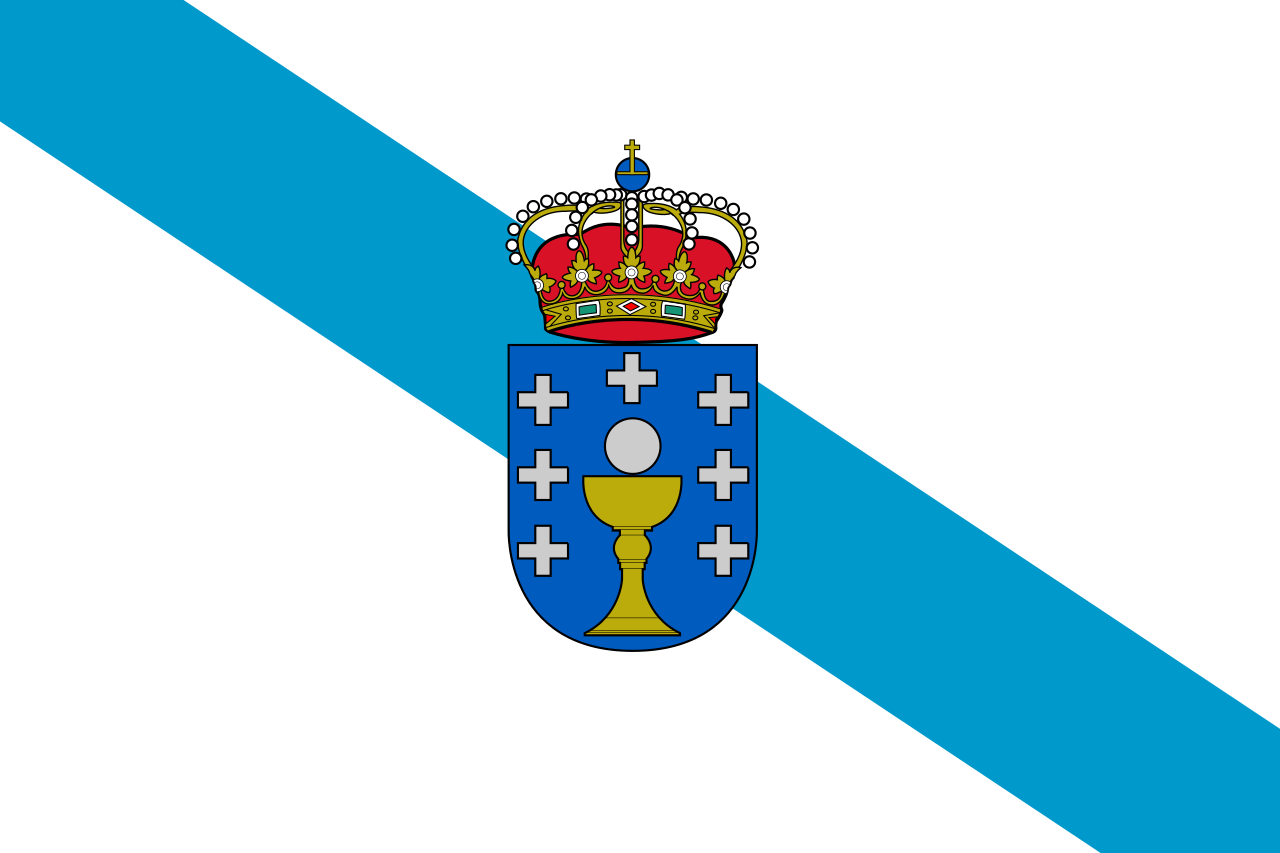 加利西亚自治区
加利西亚自治区
 重要港口
重要港口
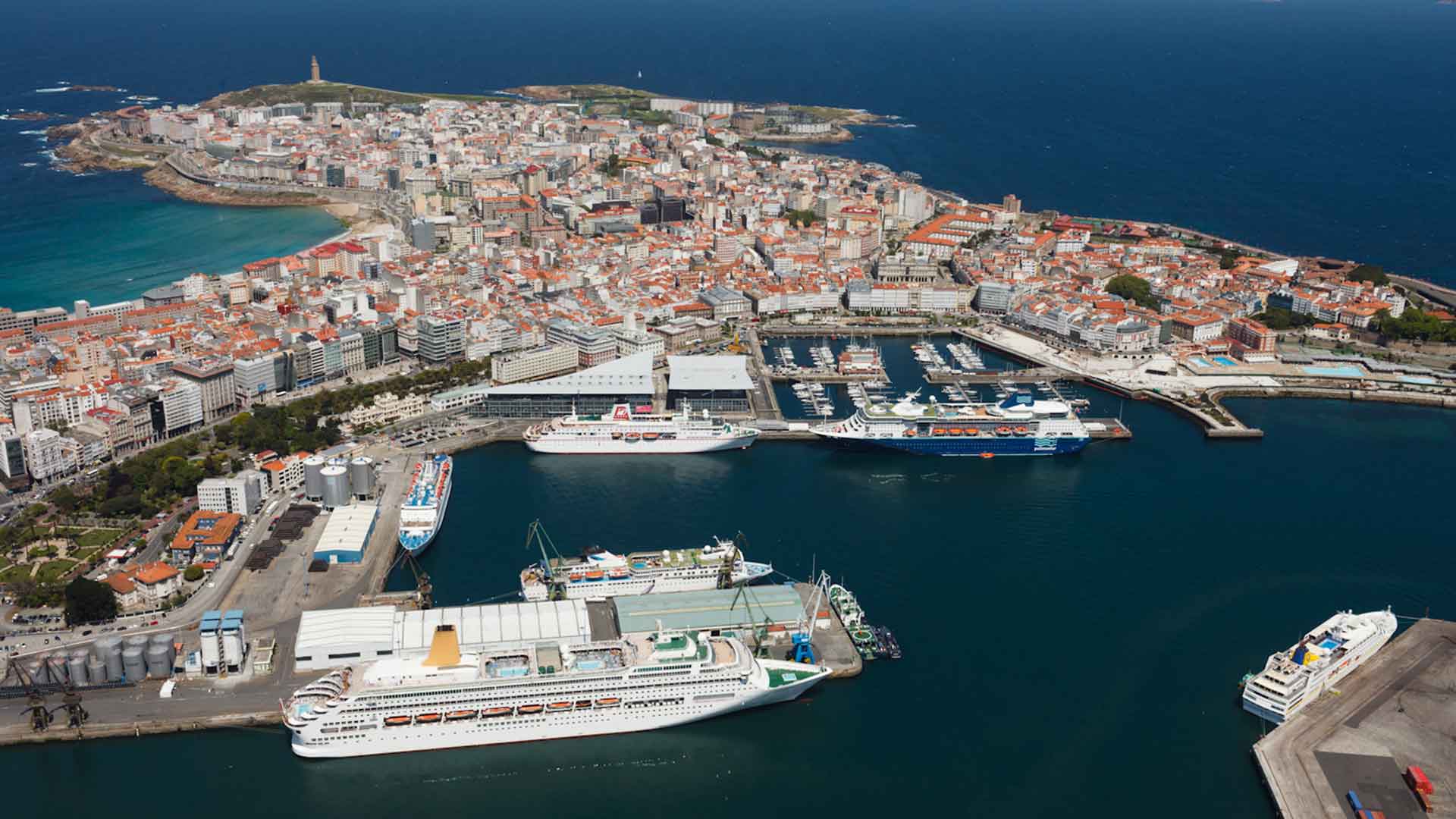
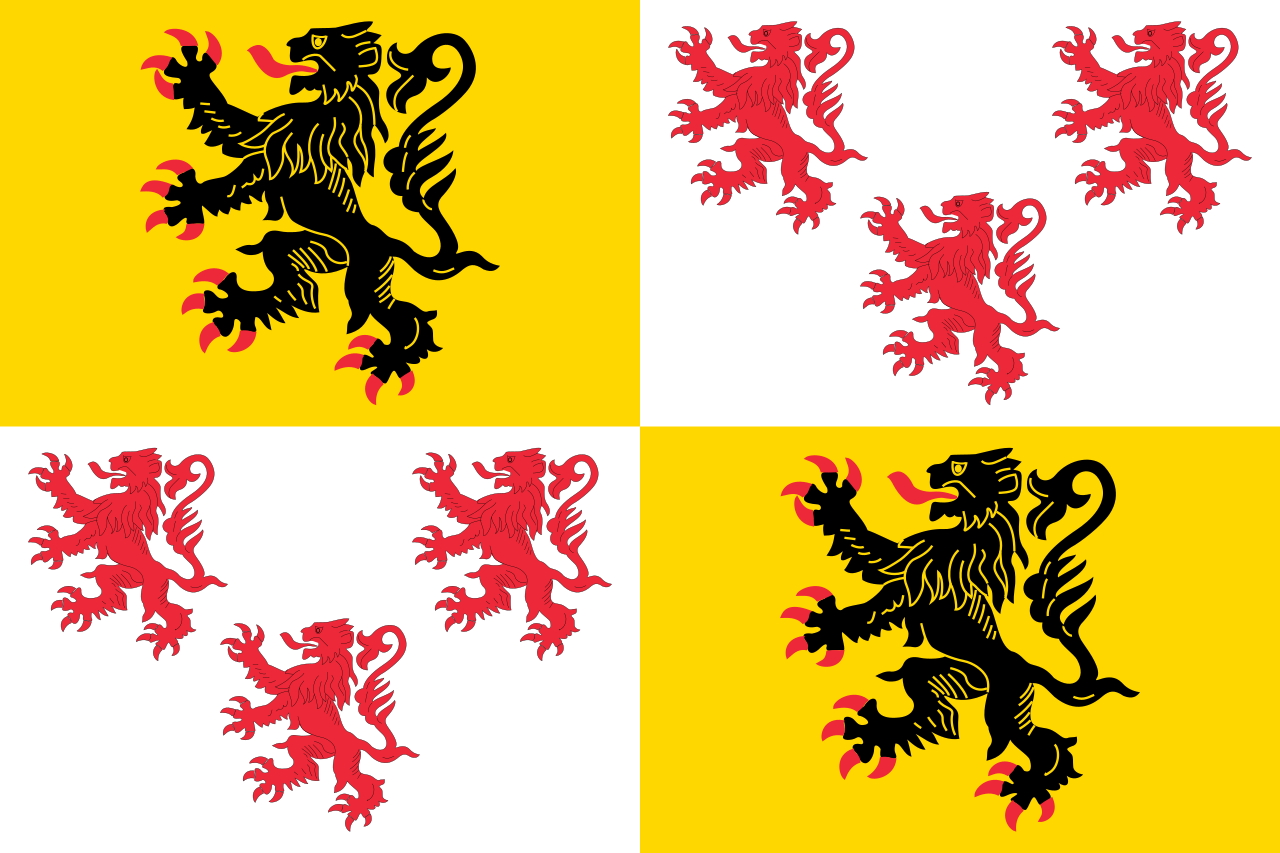 上法兰西大区
上法兰西大区
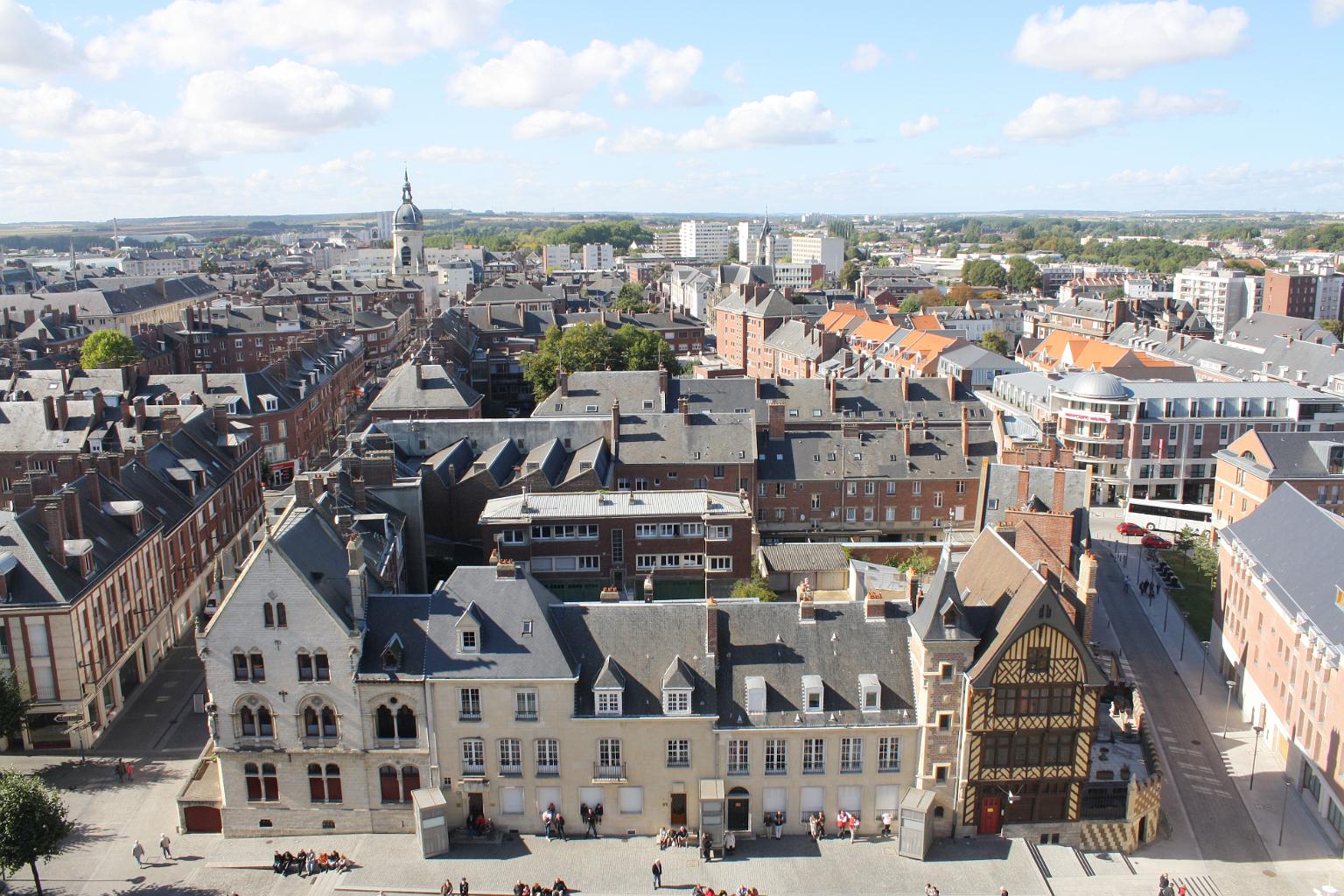
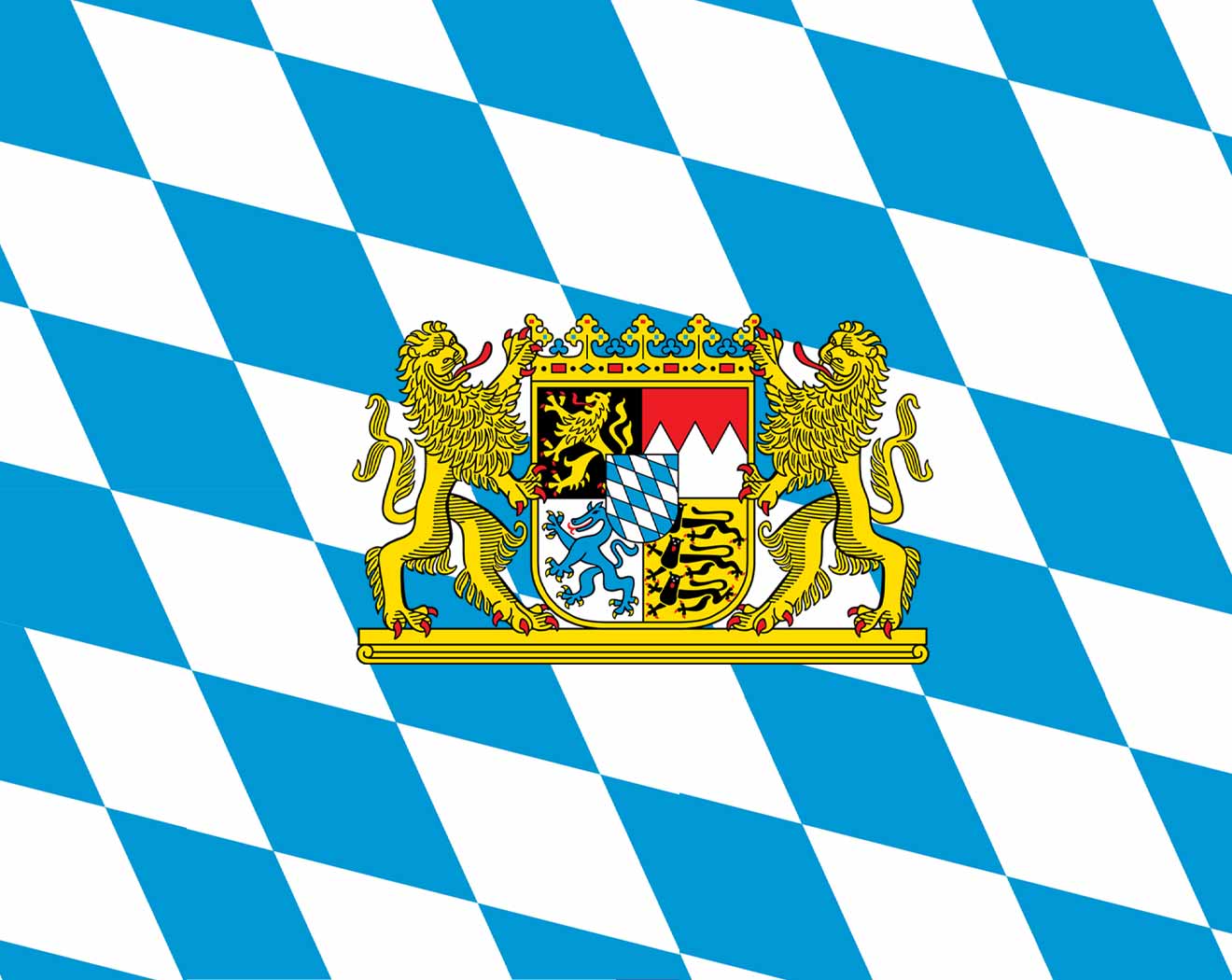 巴伐利亚州
巴伐利亚州
 历史
历史
 假期和旅游
假期和旅游
 文化遗产
文化遗产
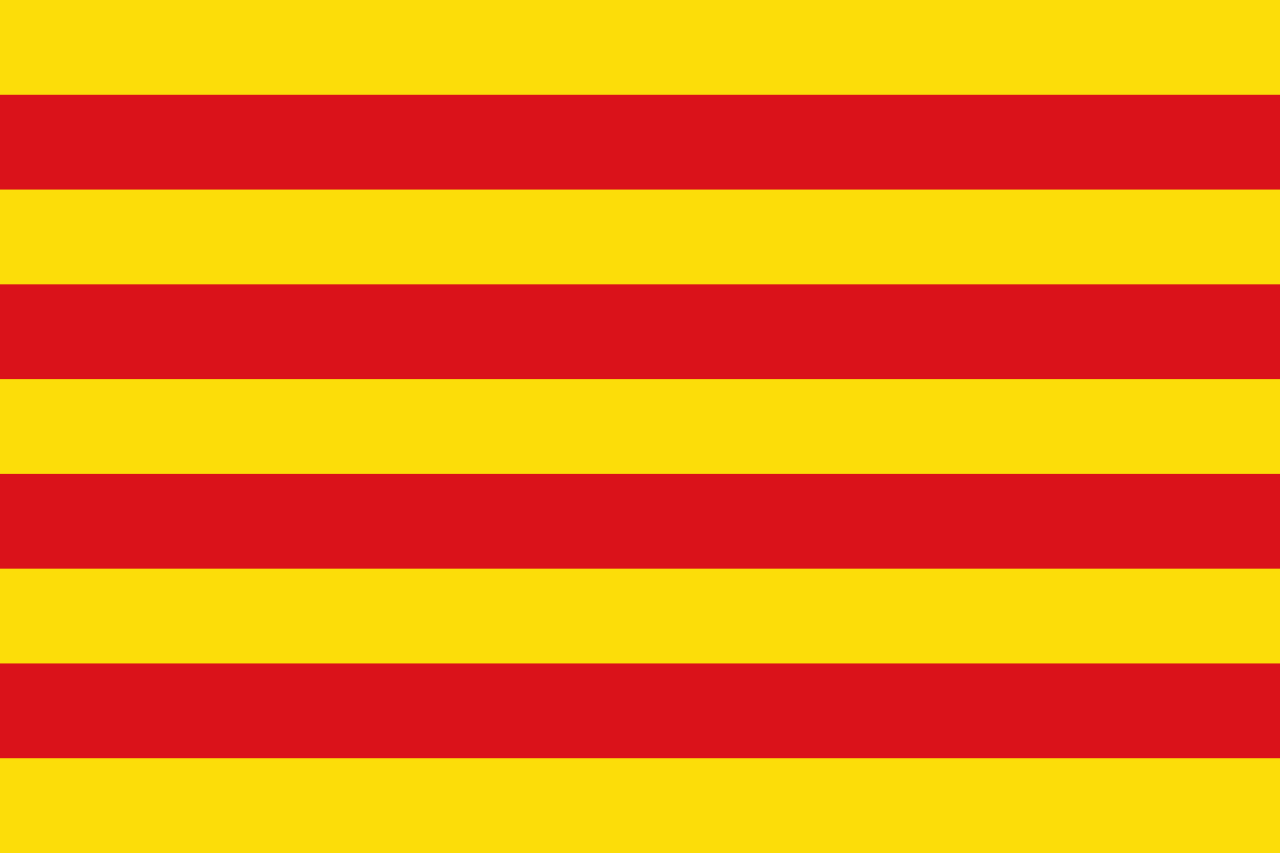 加泰罗尼亚
加泰罗尼亚
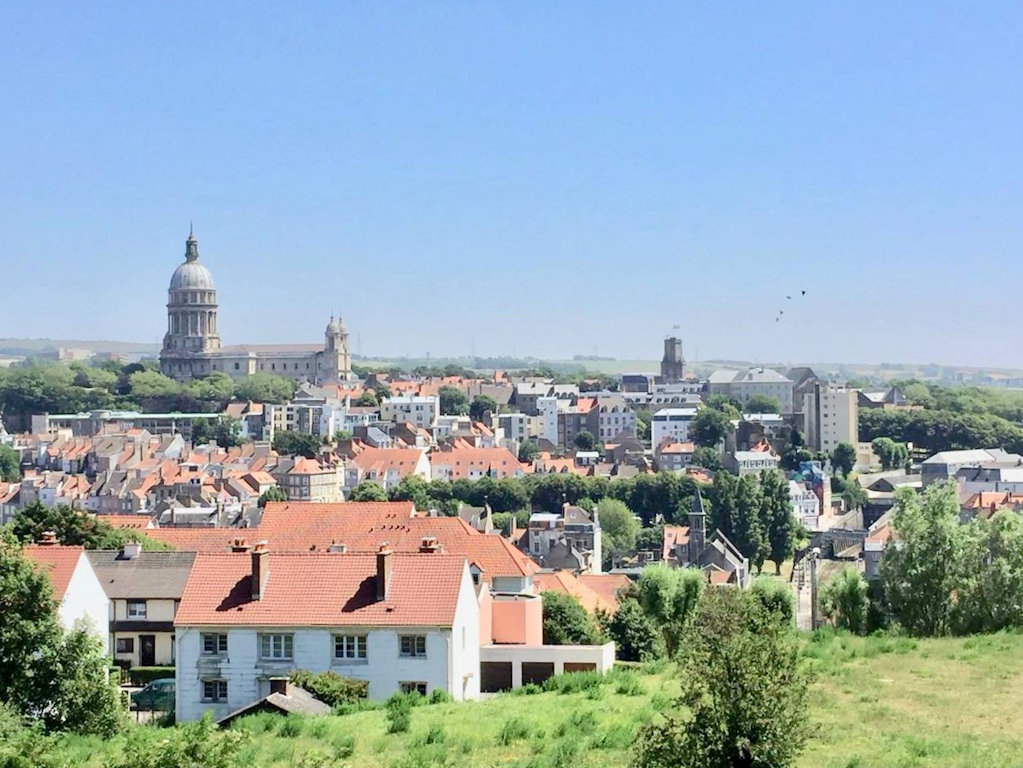
 体育
体育
 建筑艺术
建筑艺术
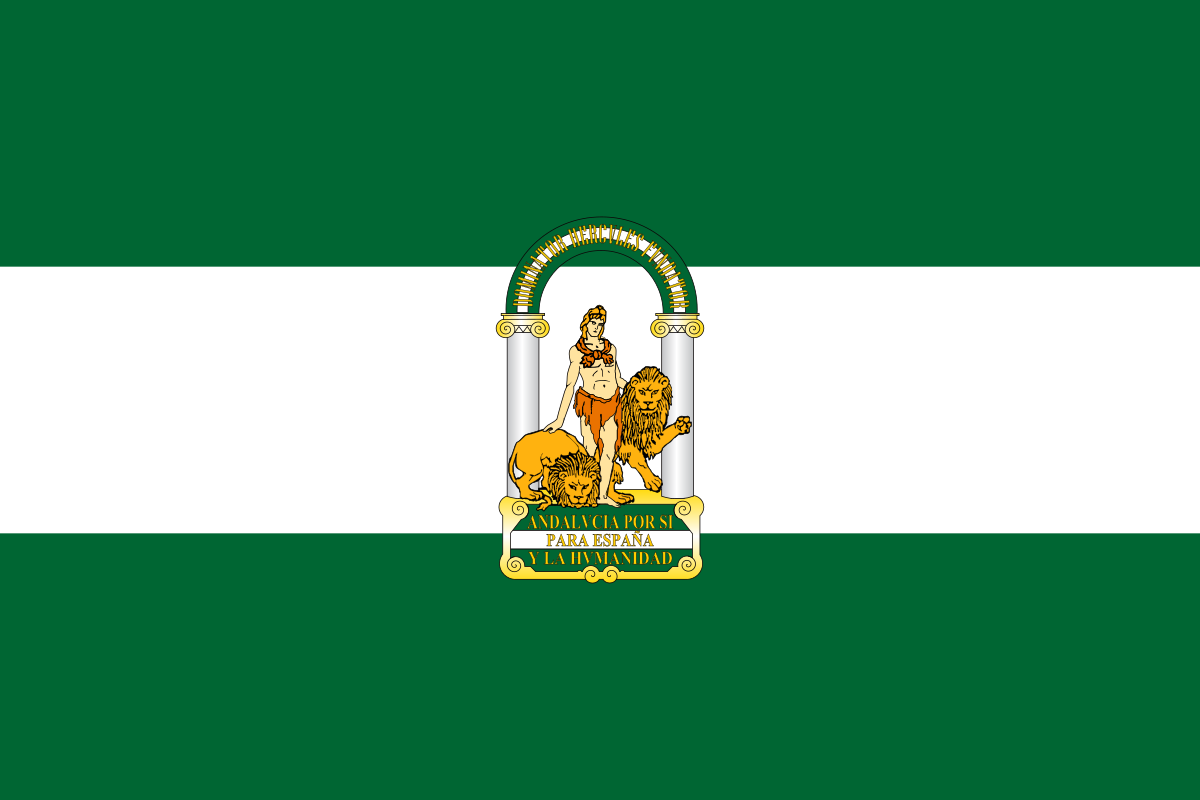 安达卢西亚自治区
安达卢西亚自治区
 艺术
艺术
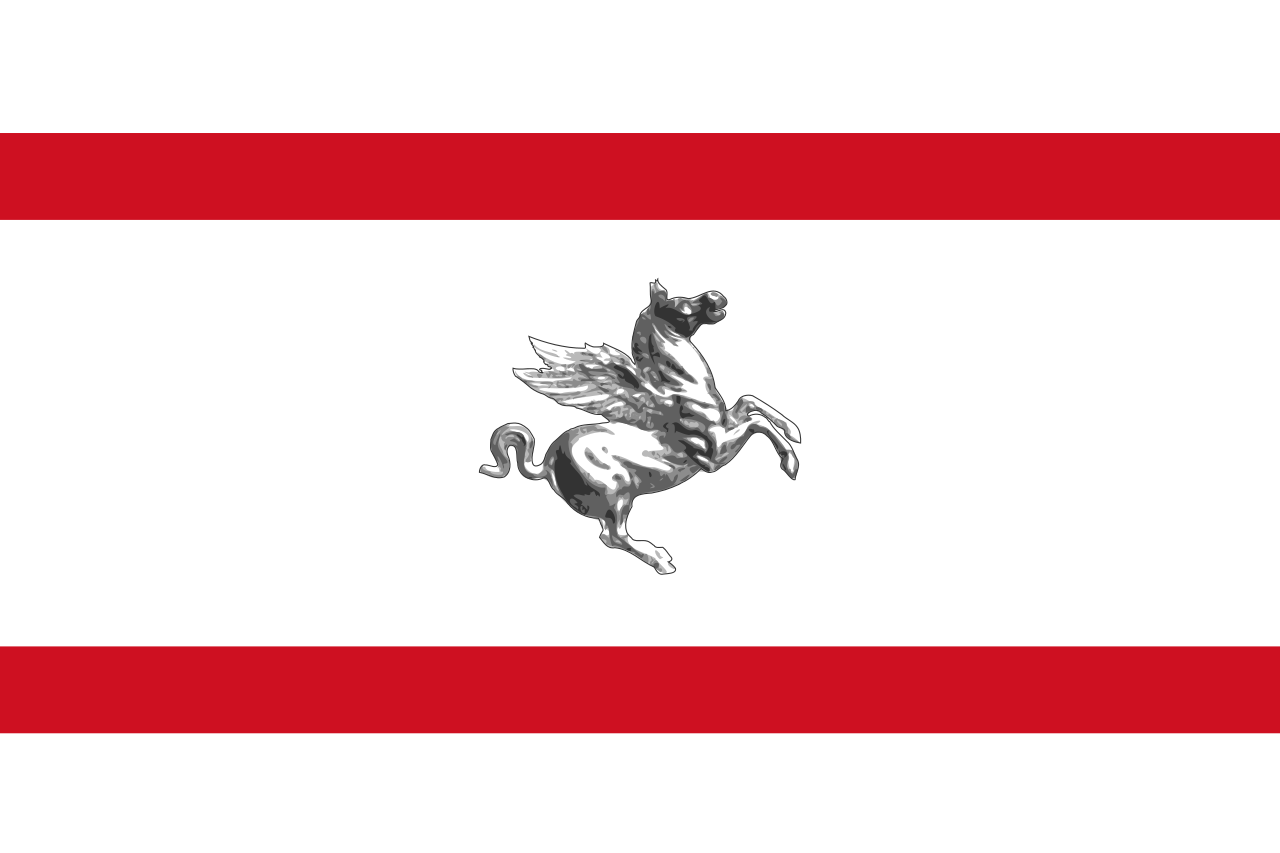 托斯卡纳大区
托斯卡纳大区